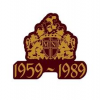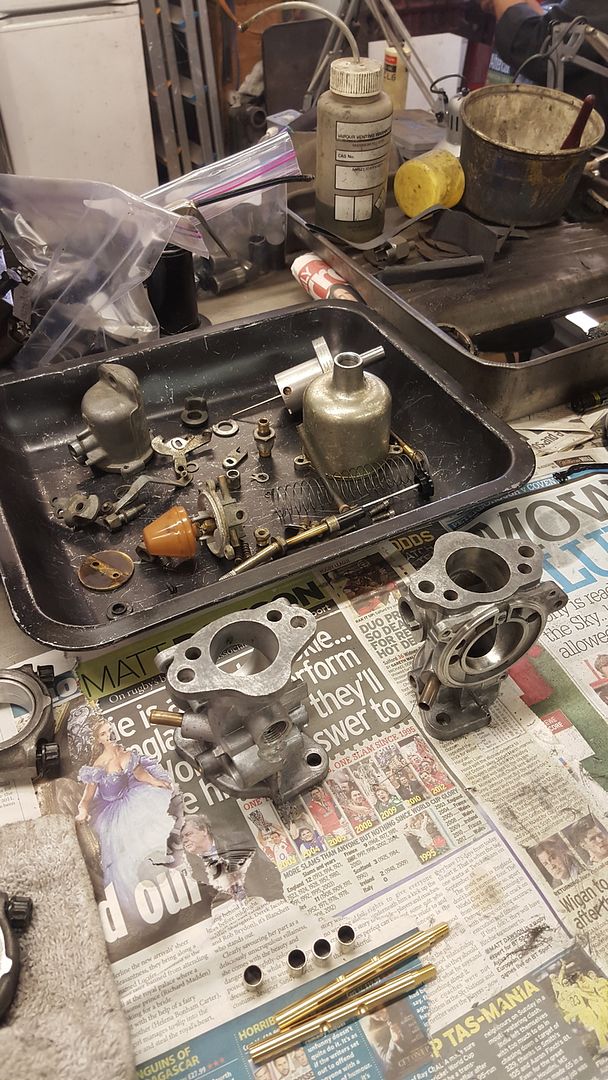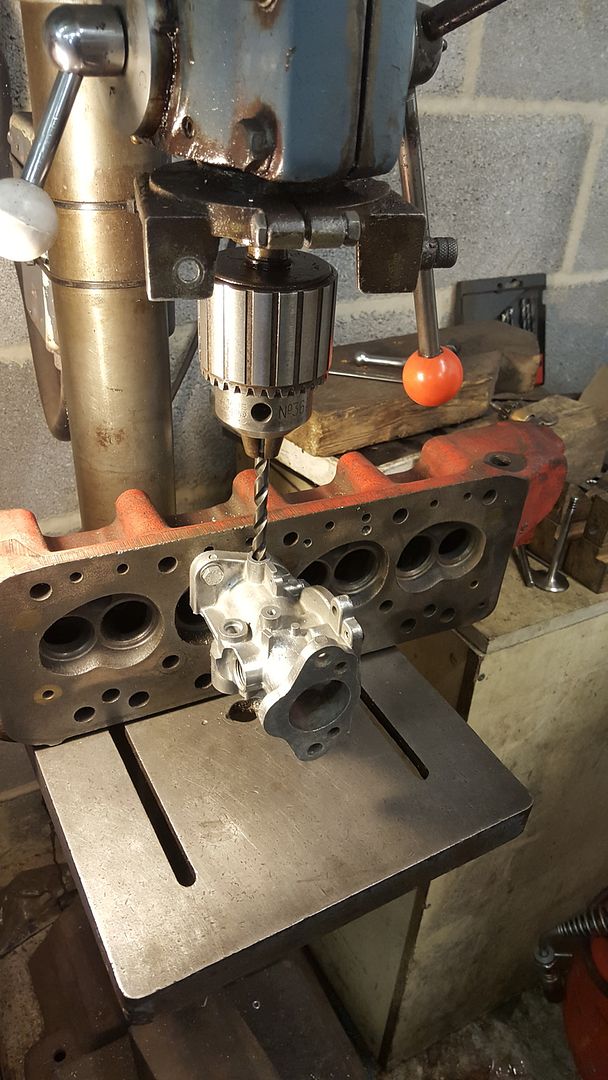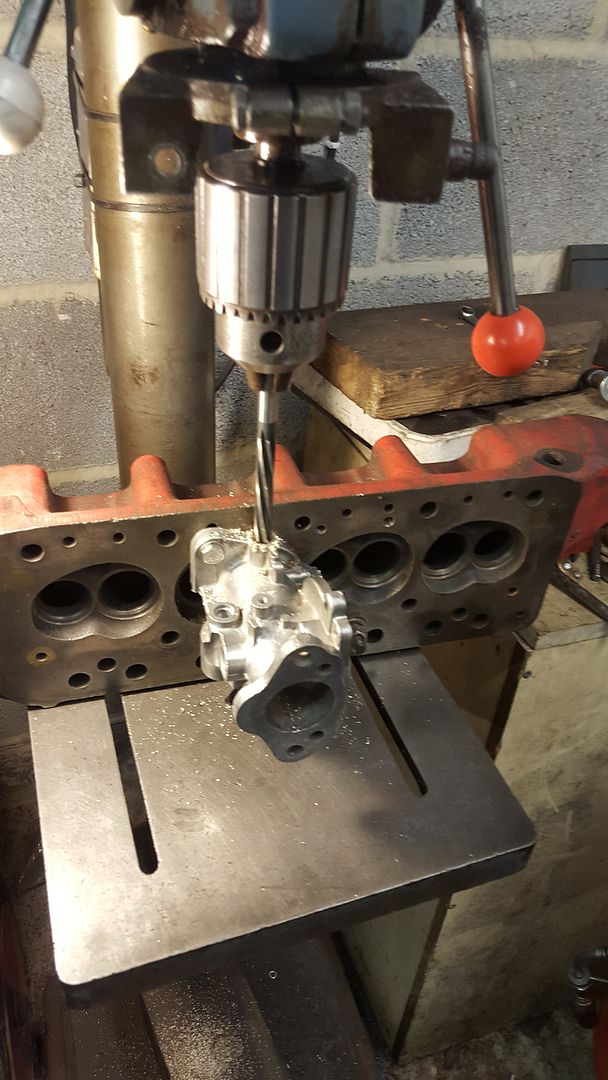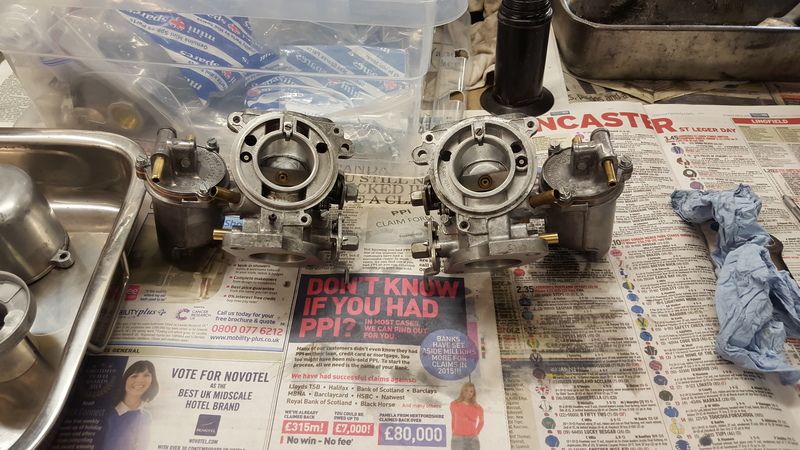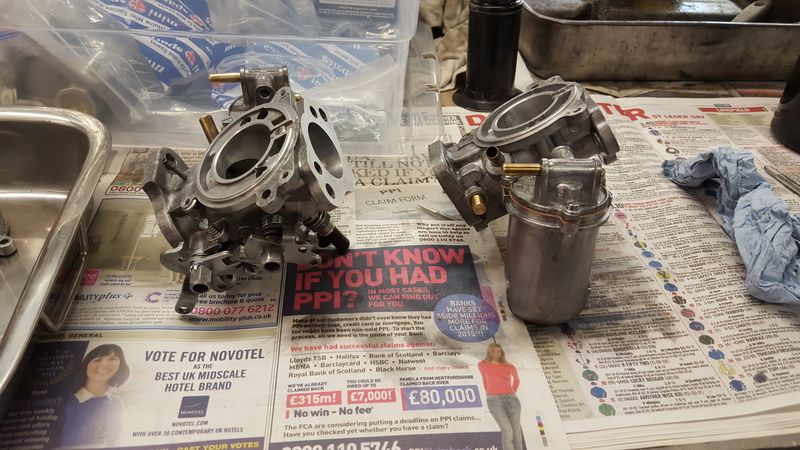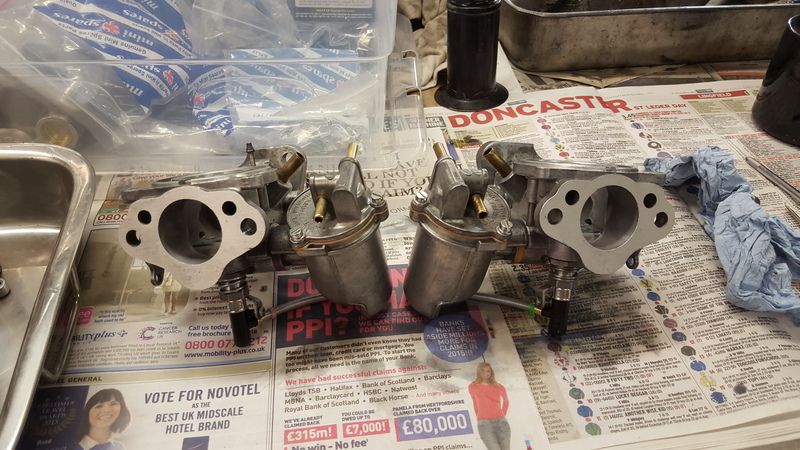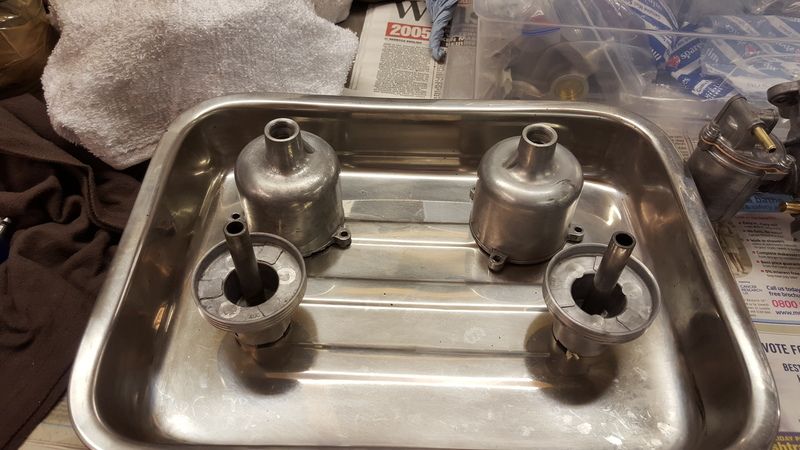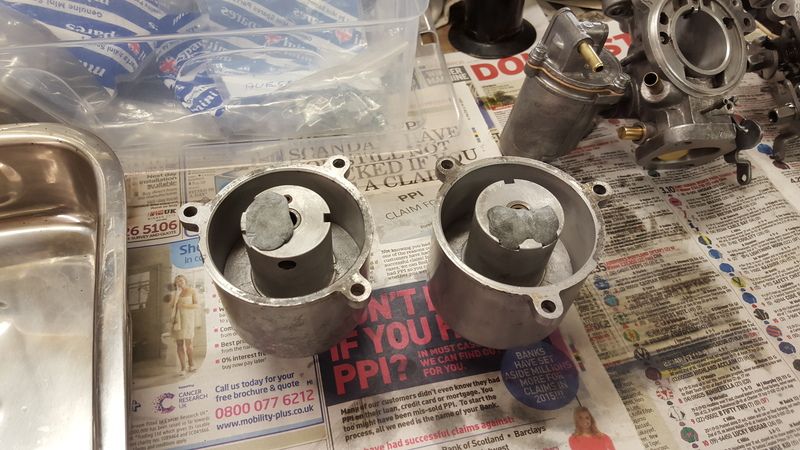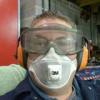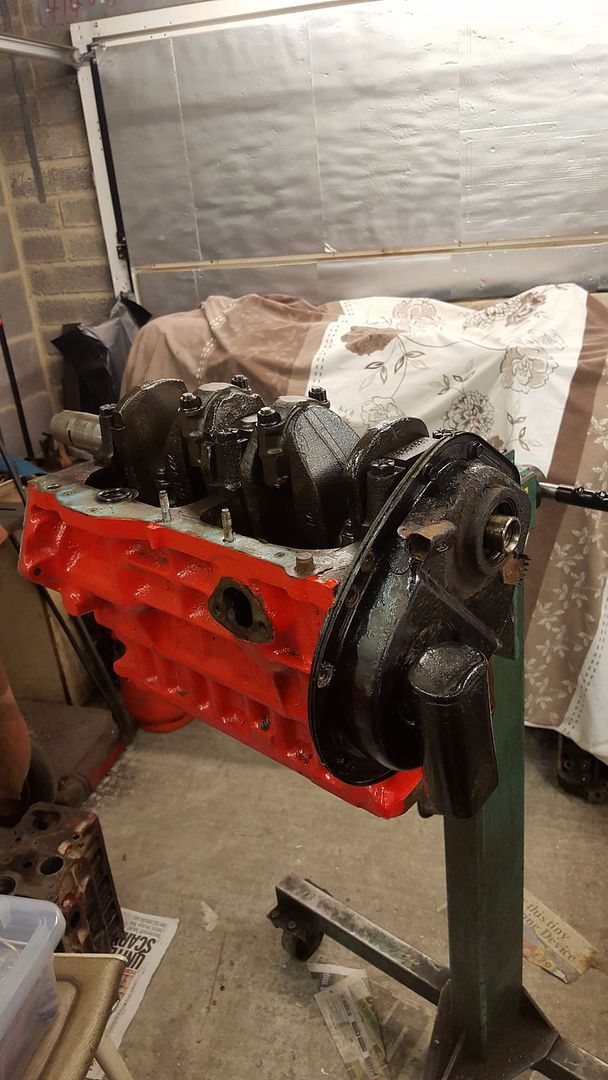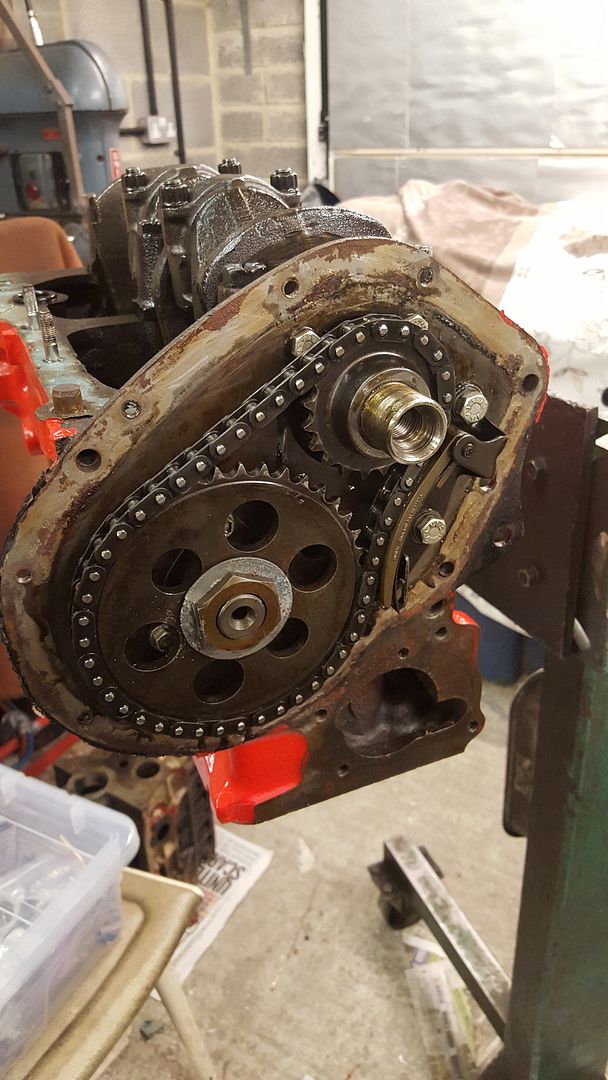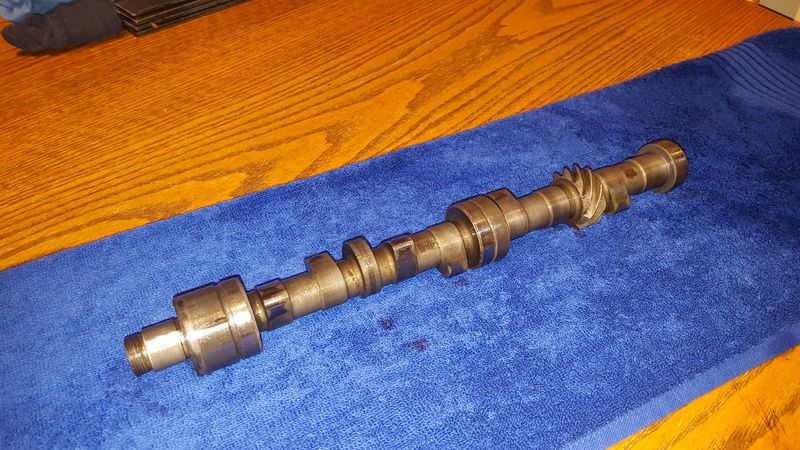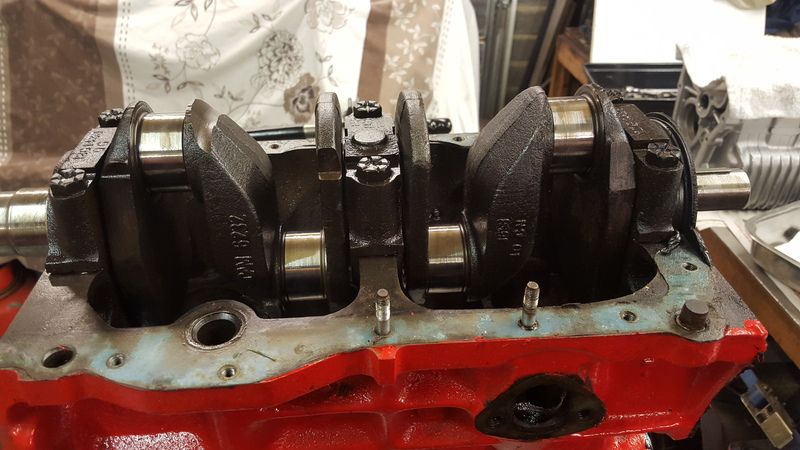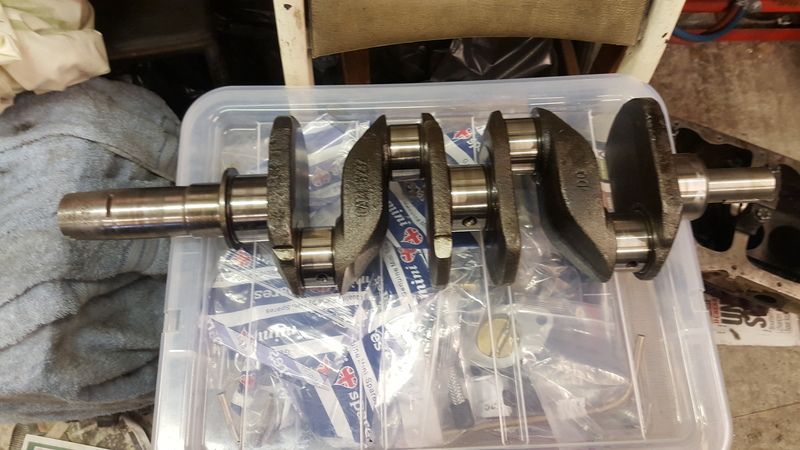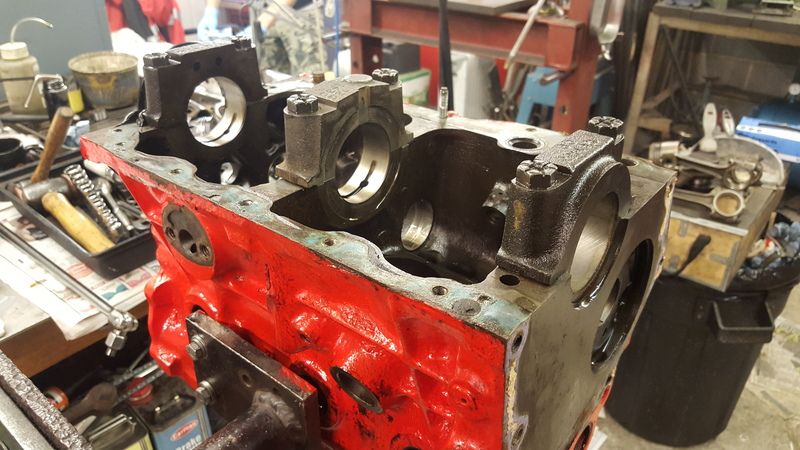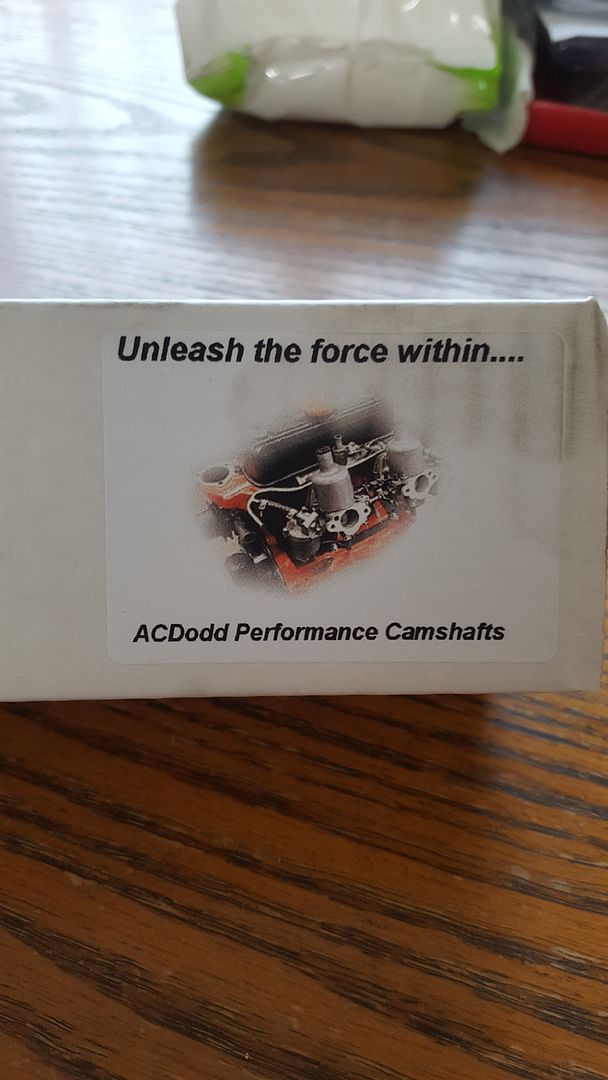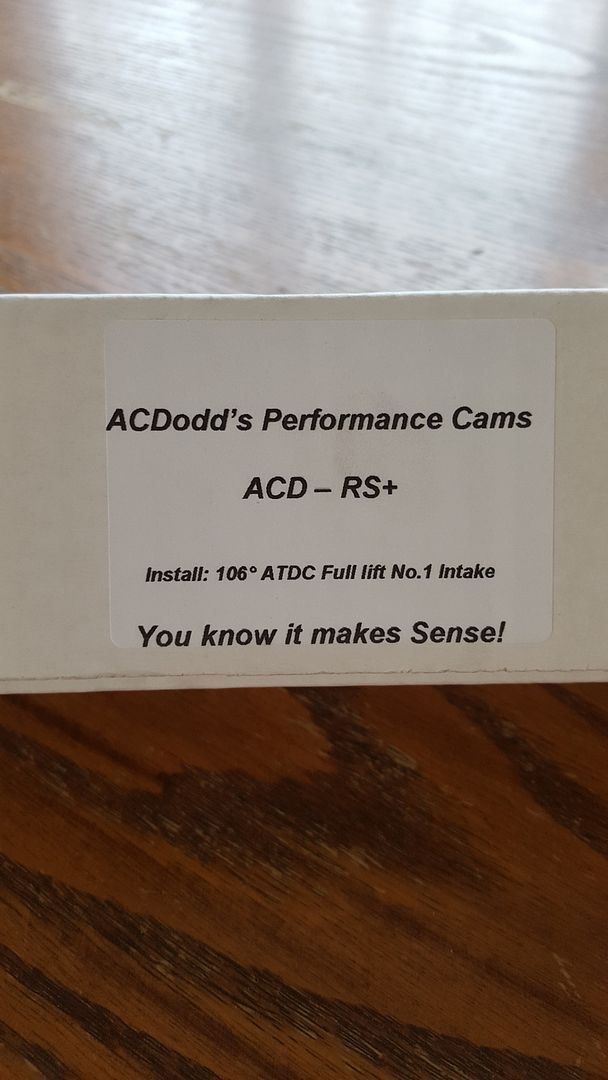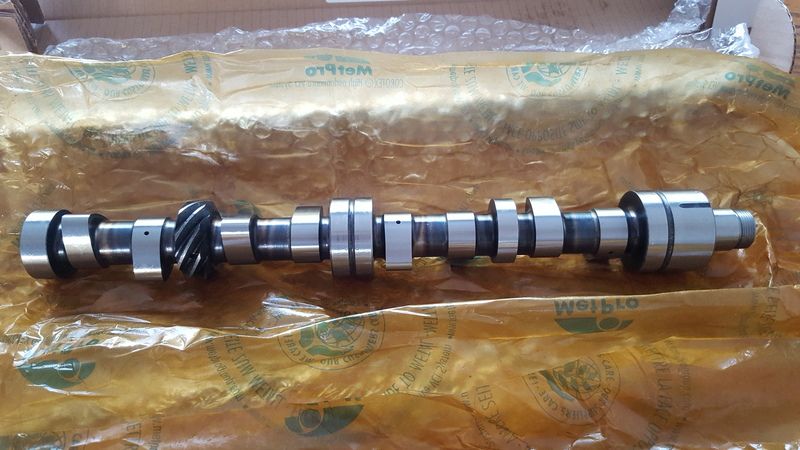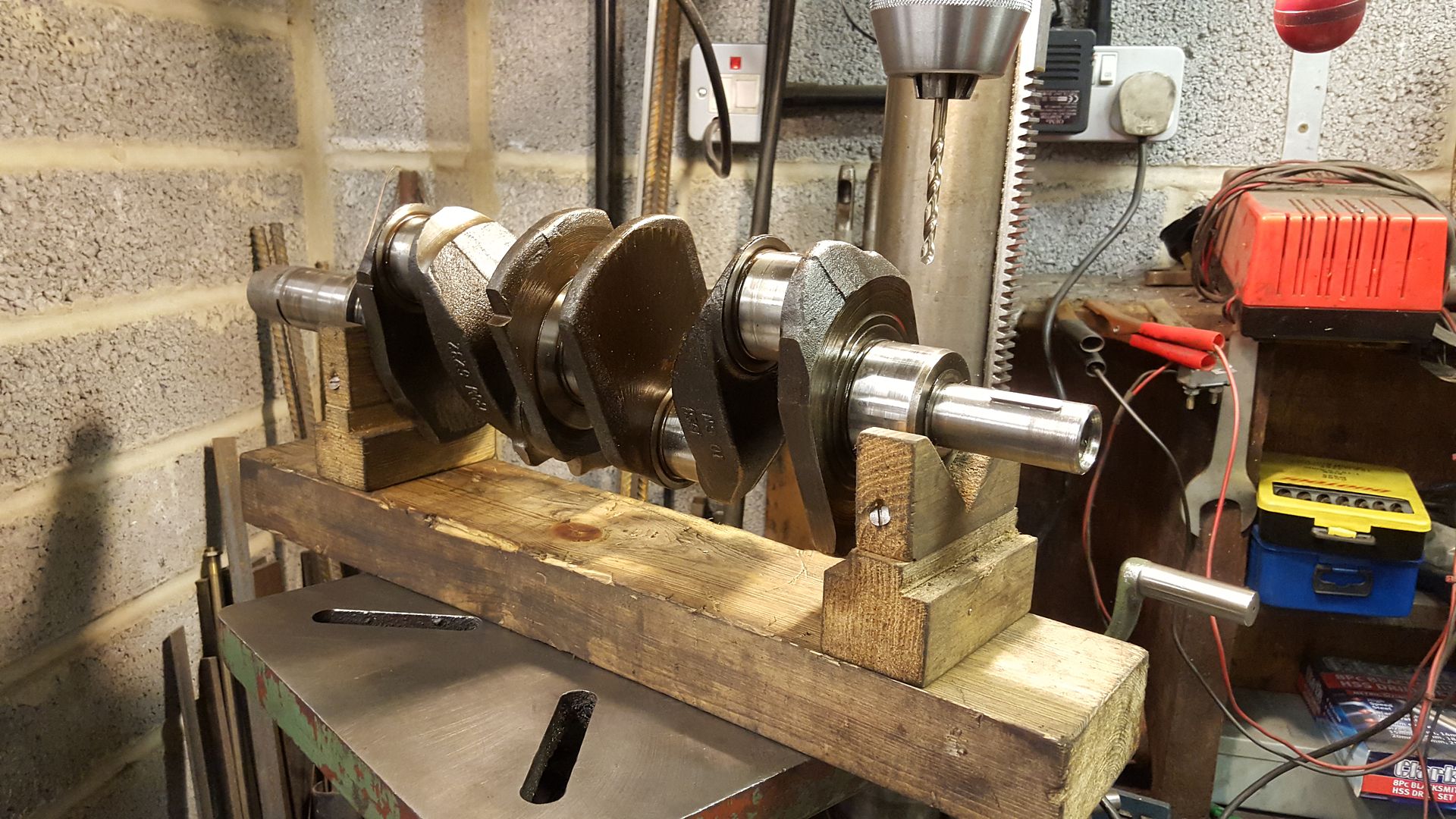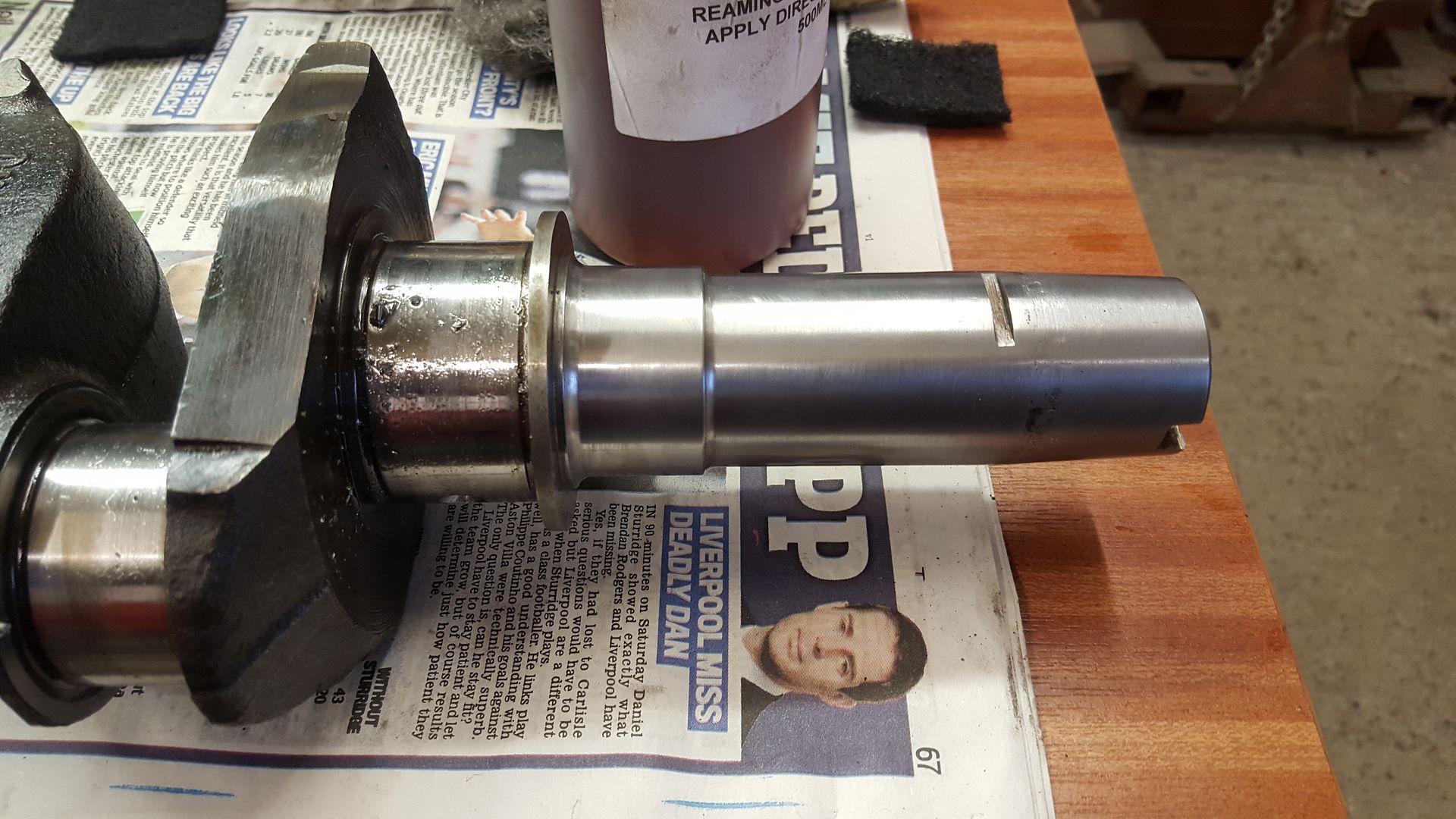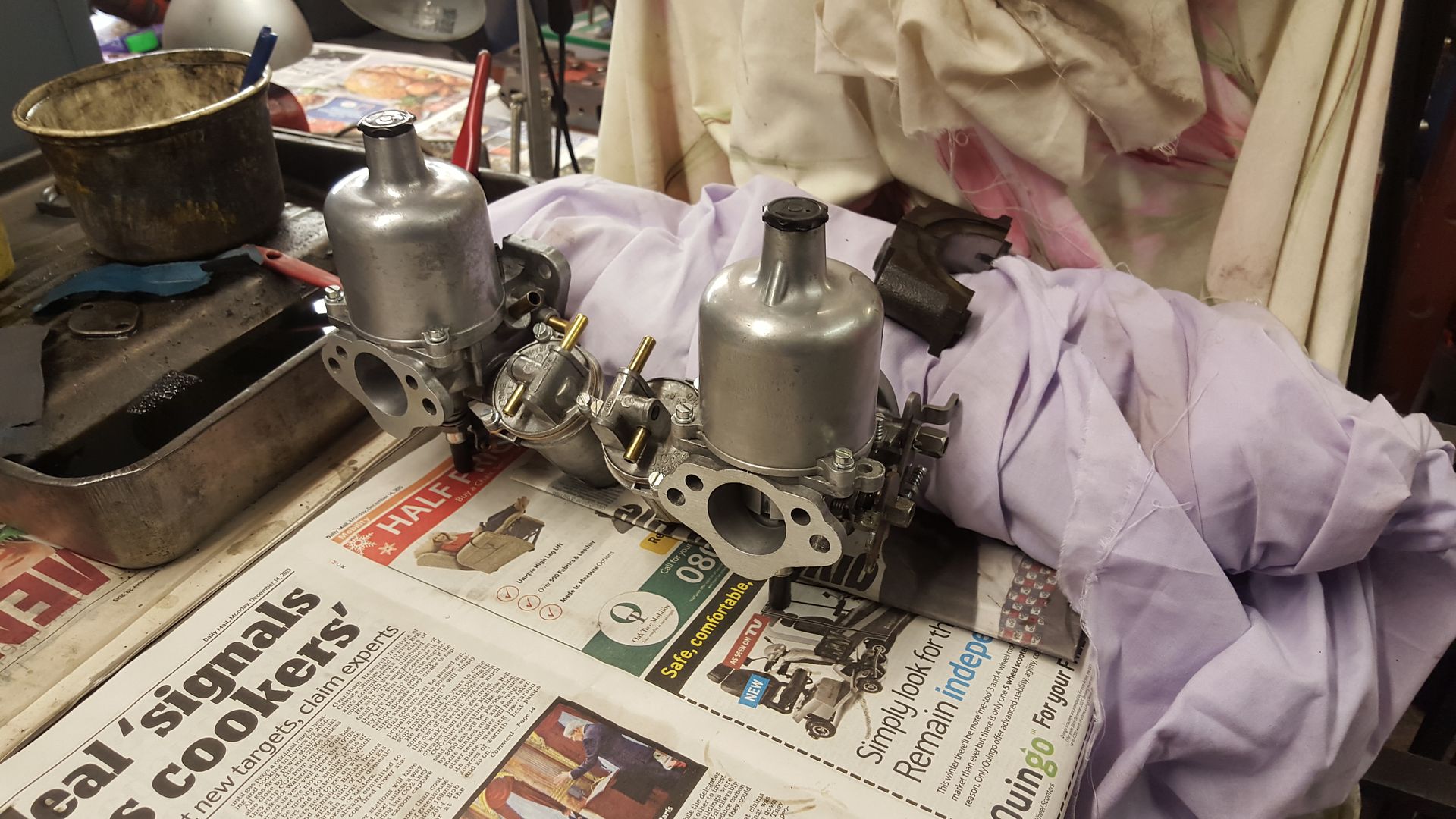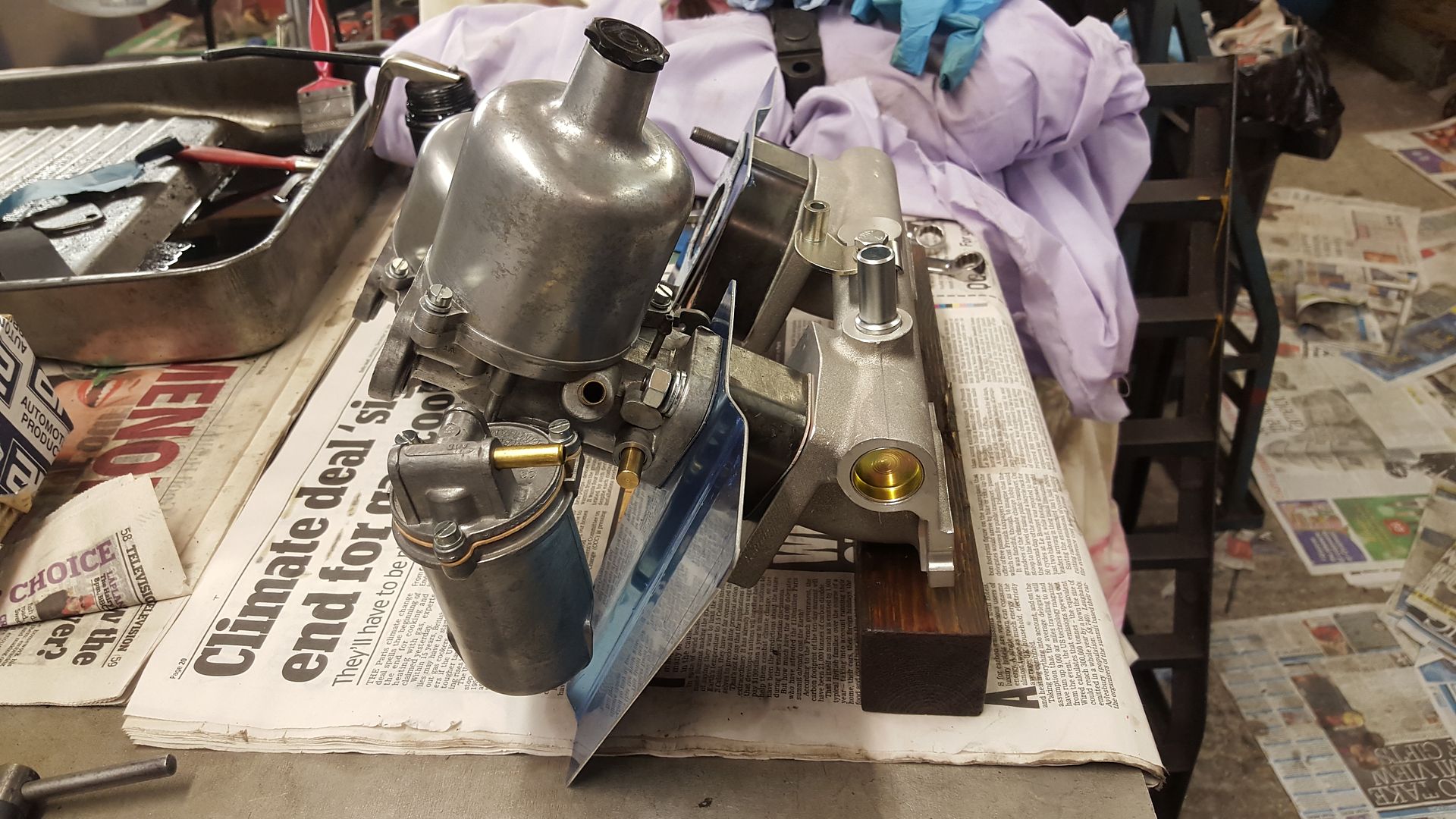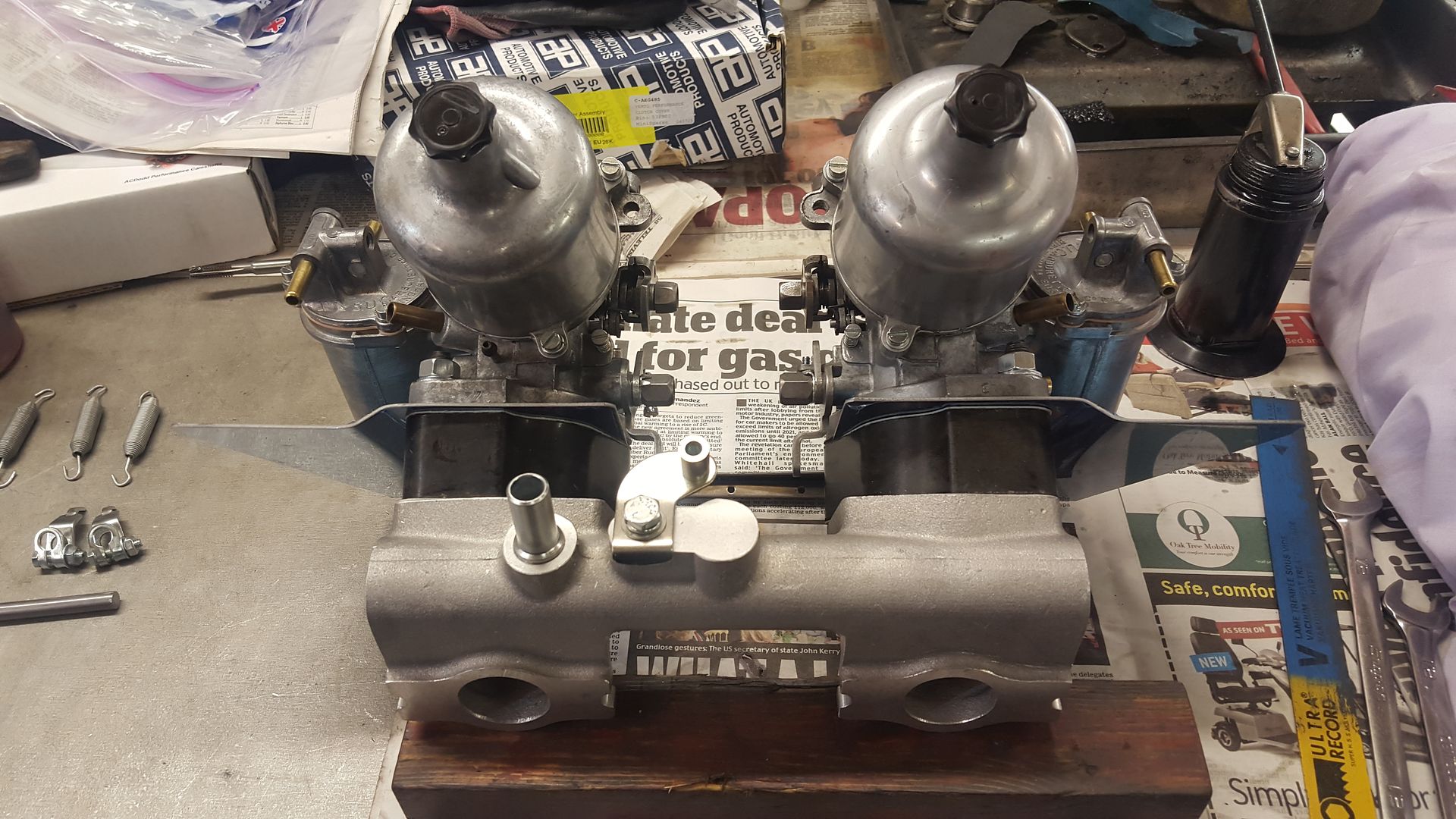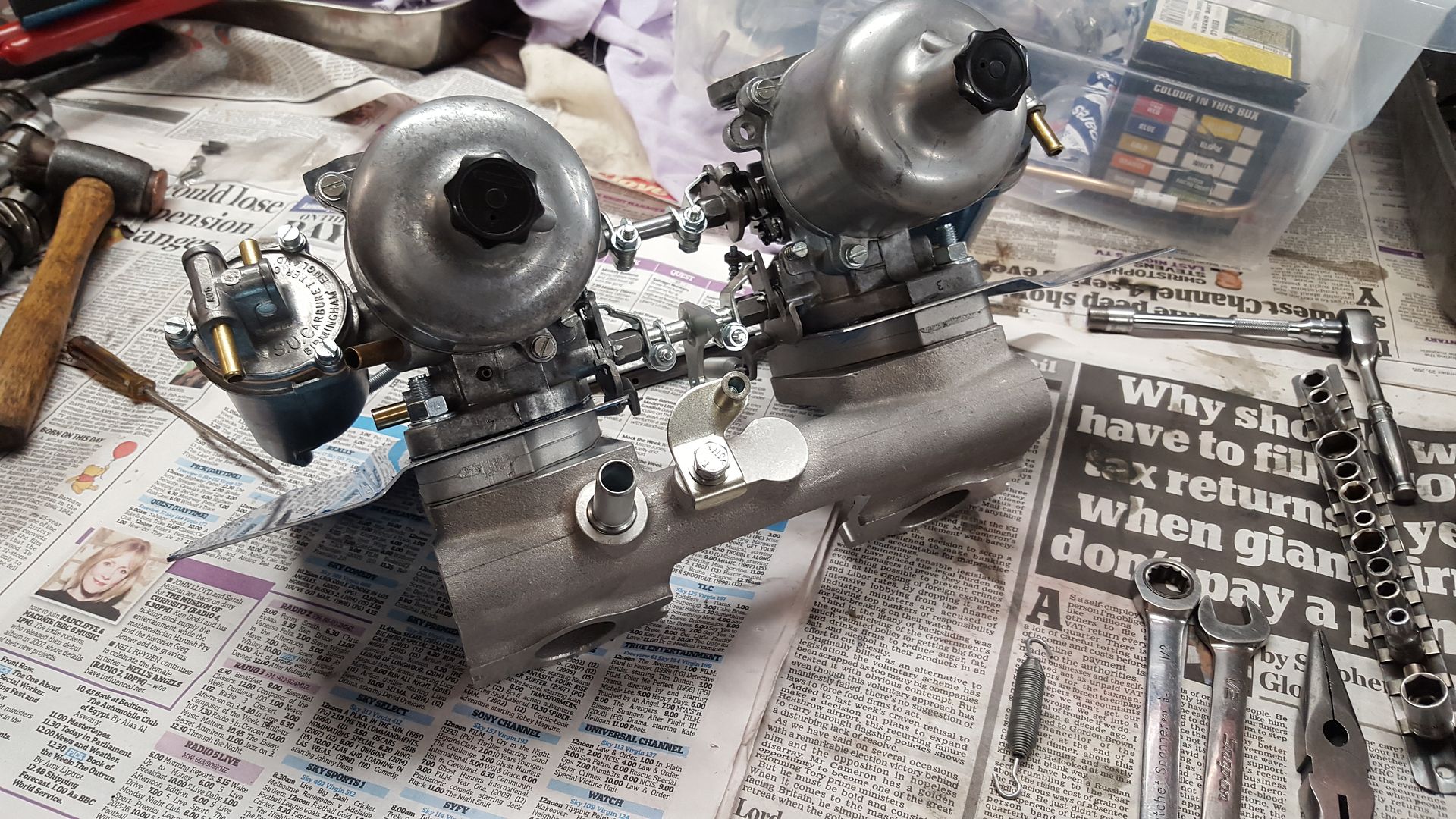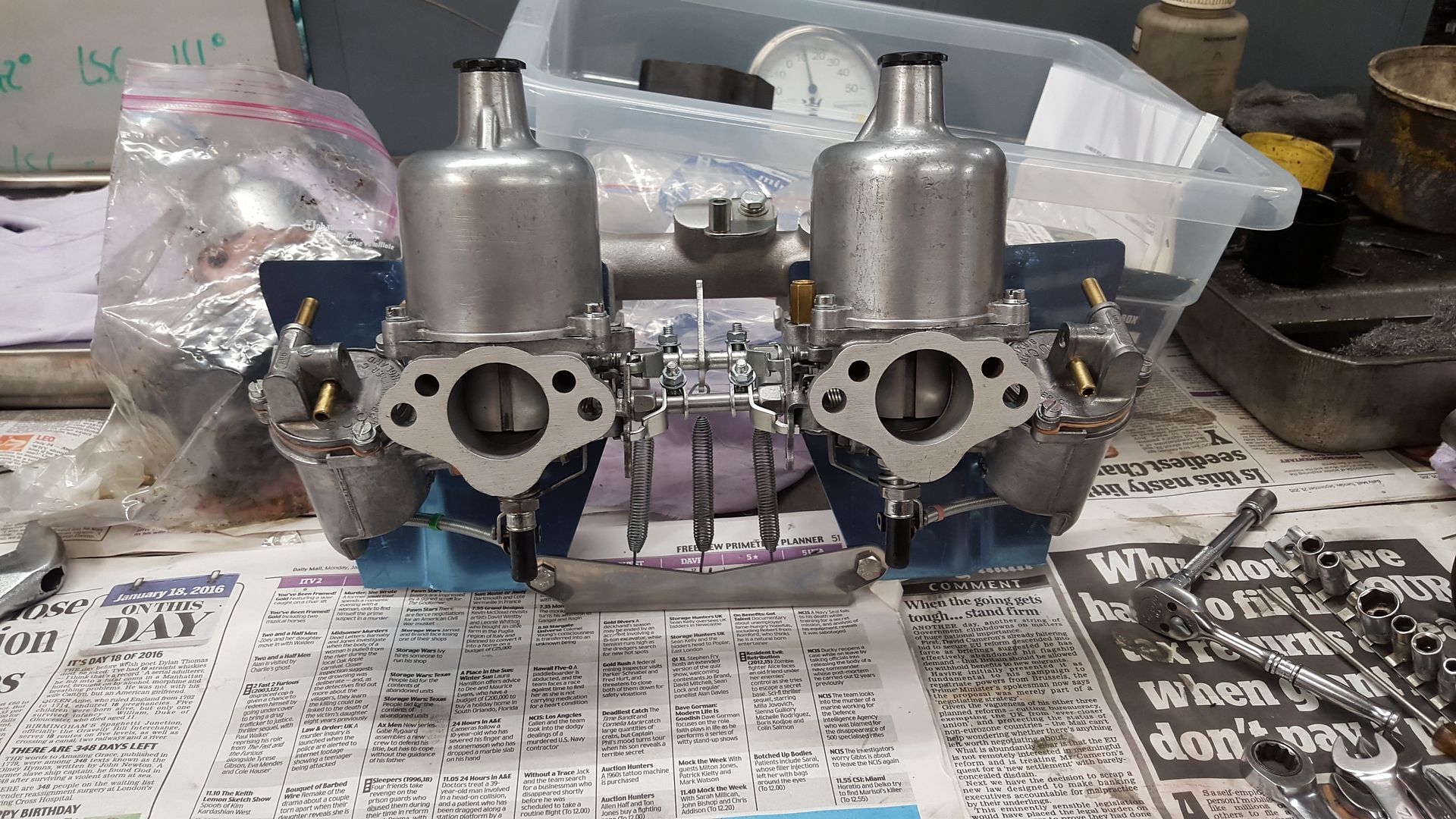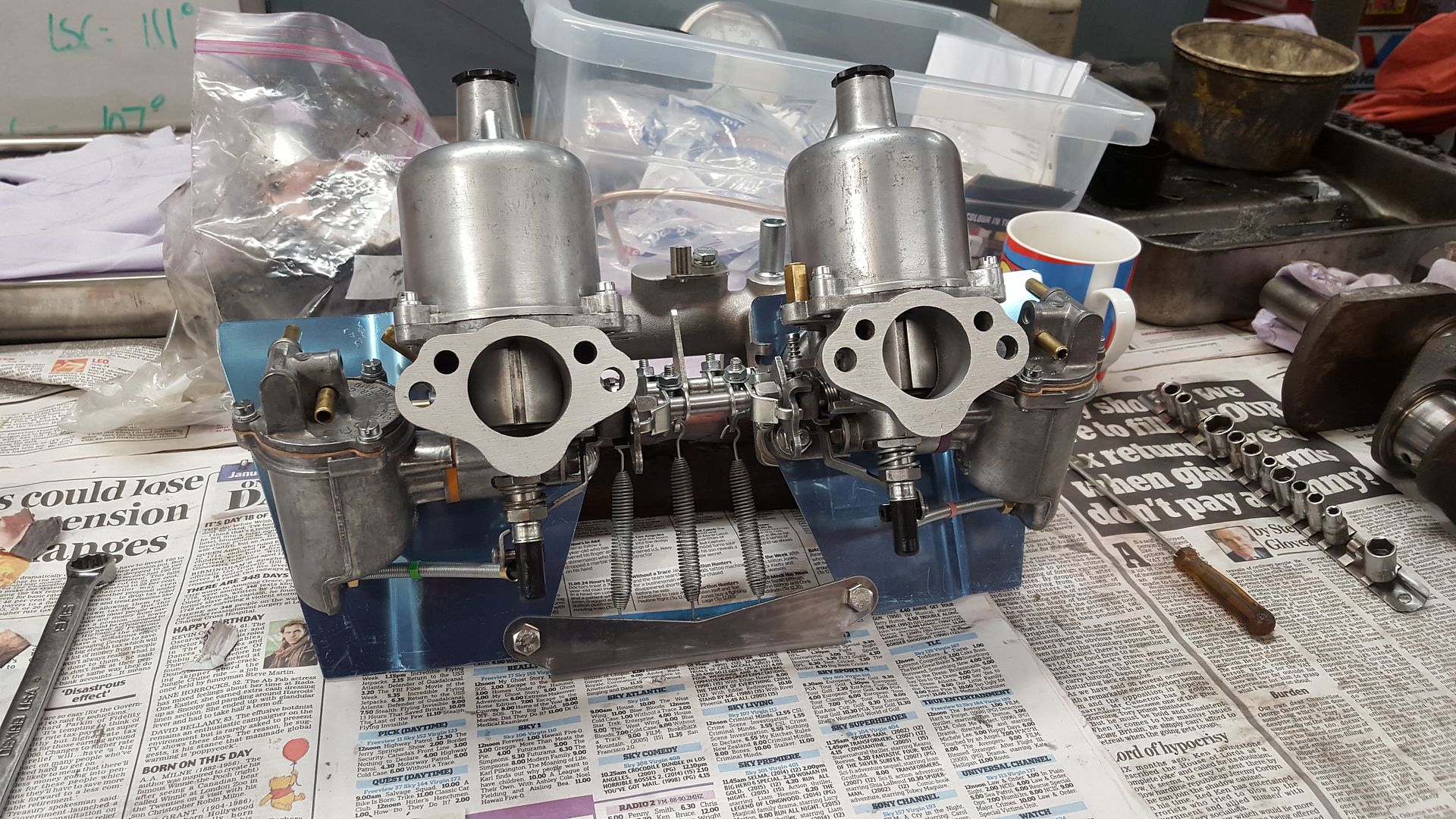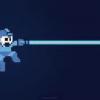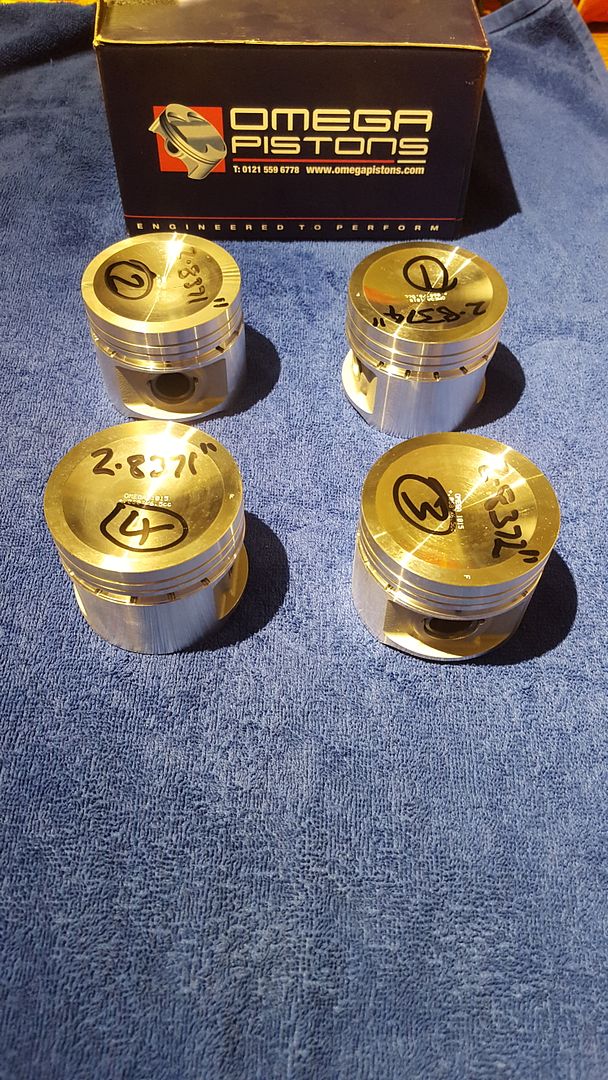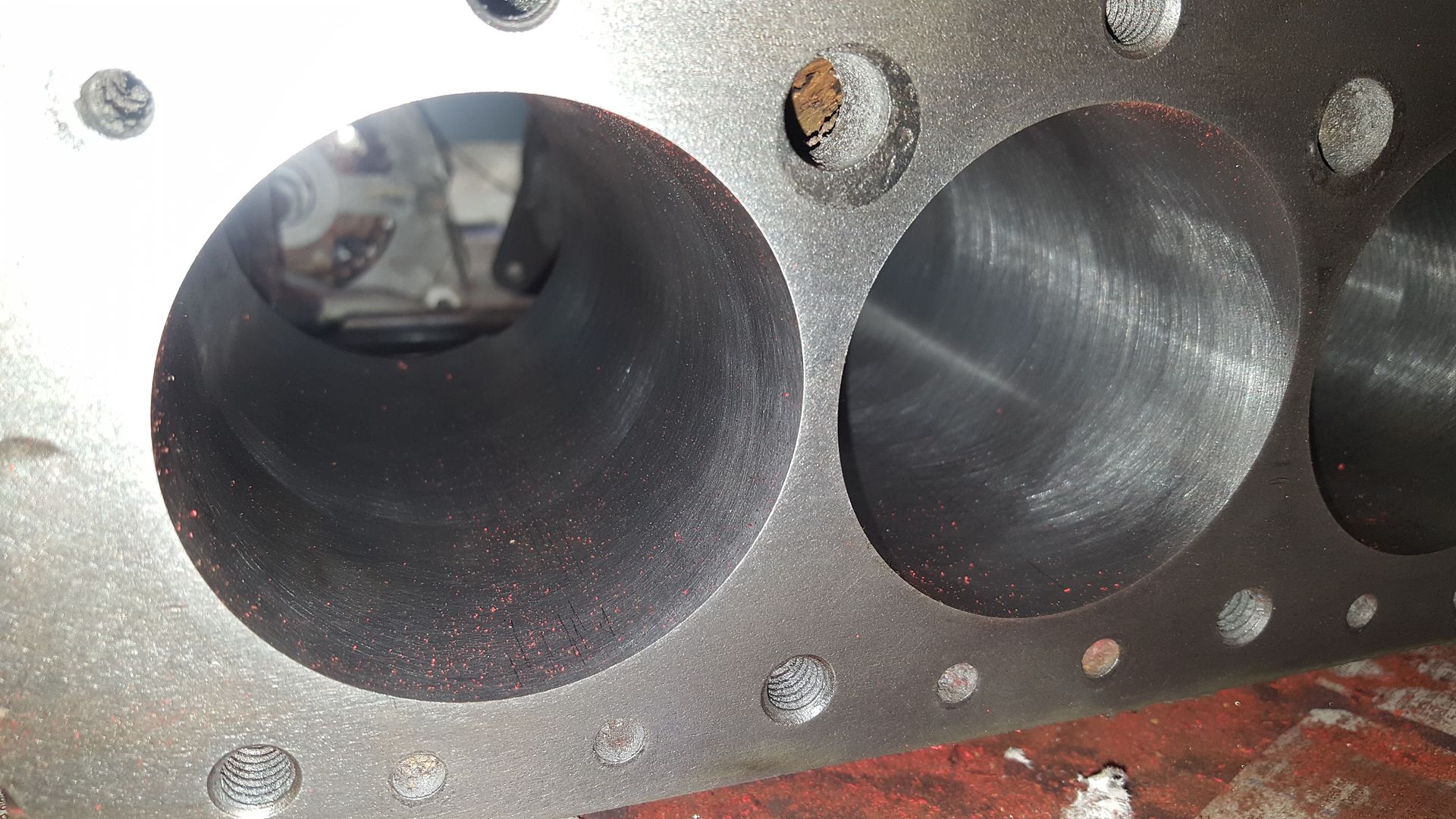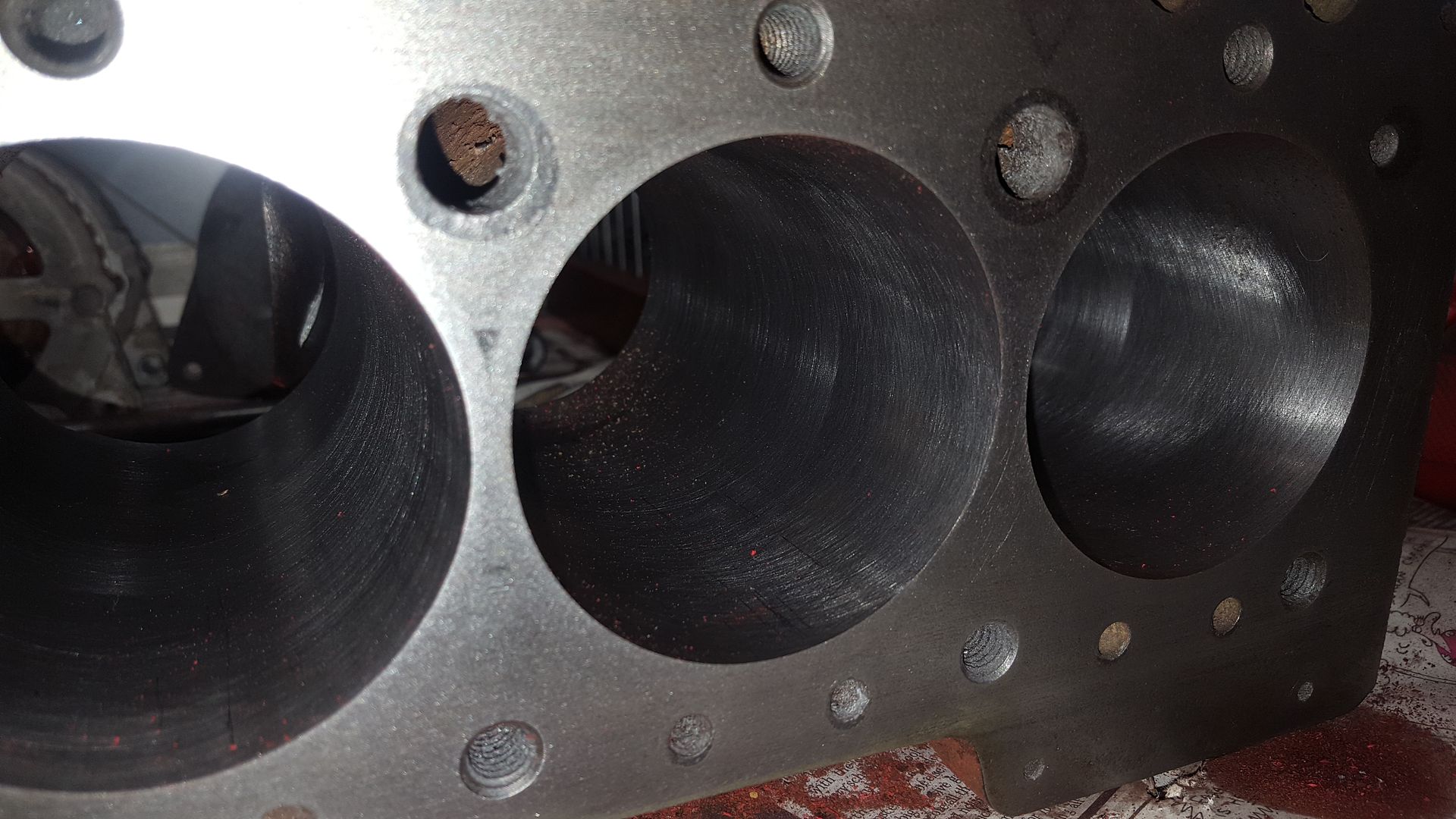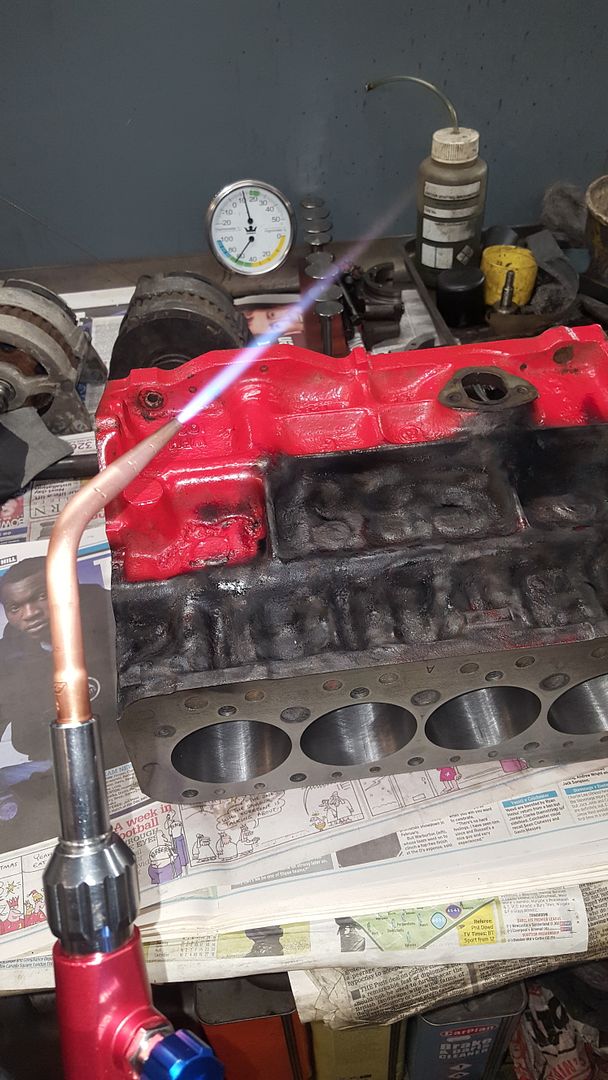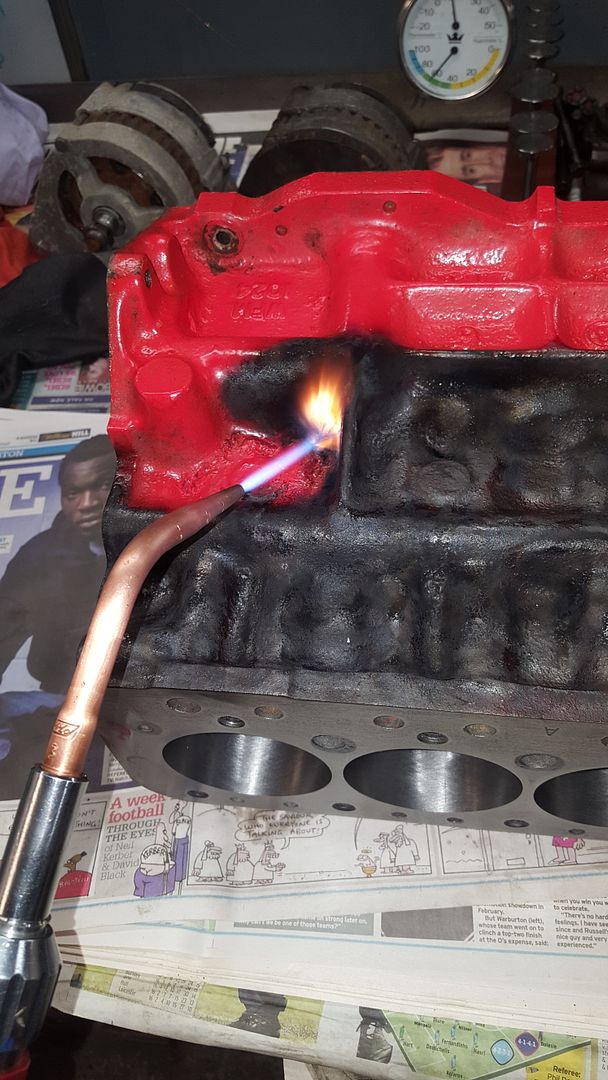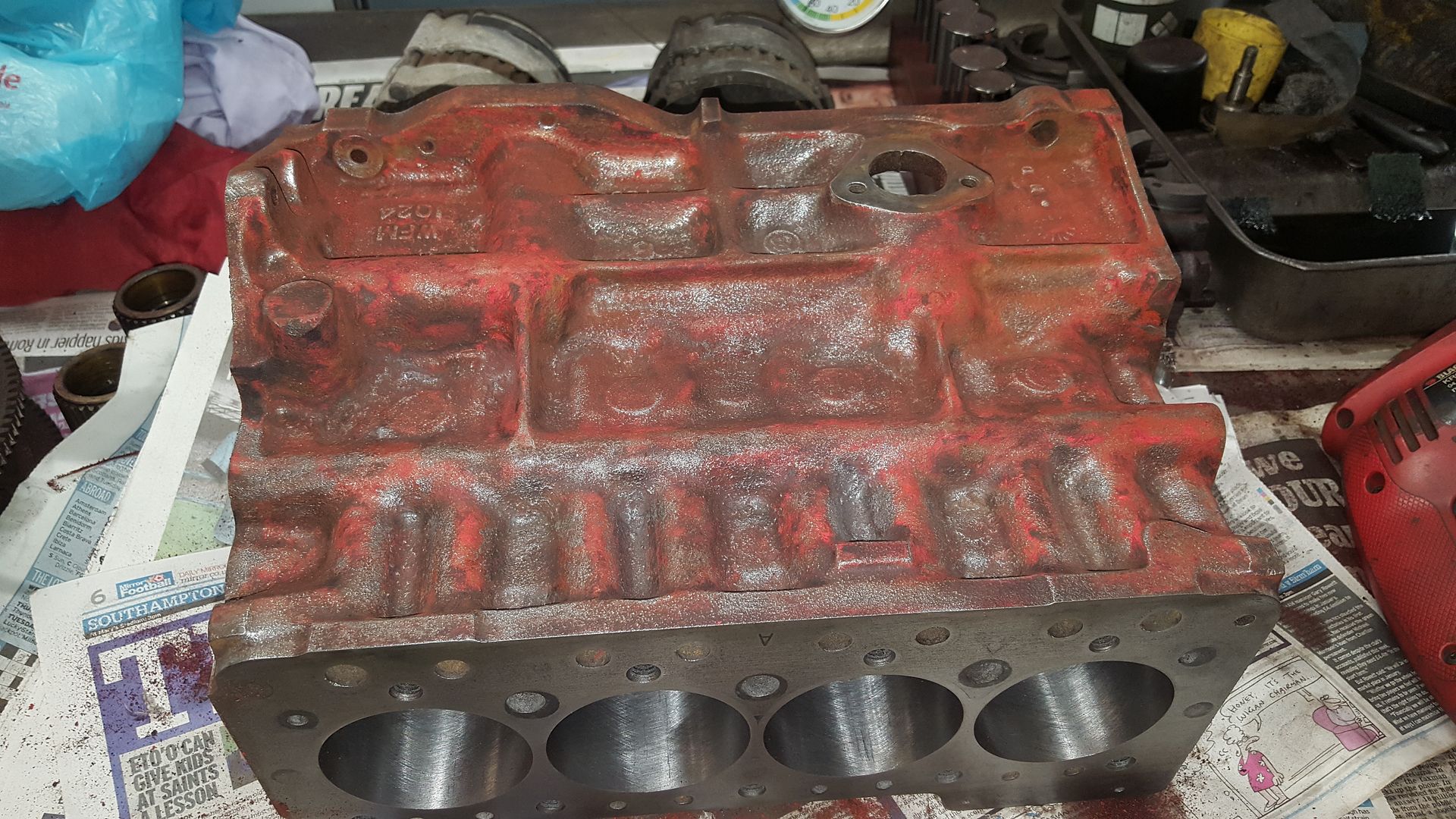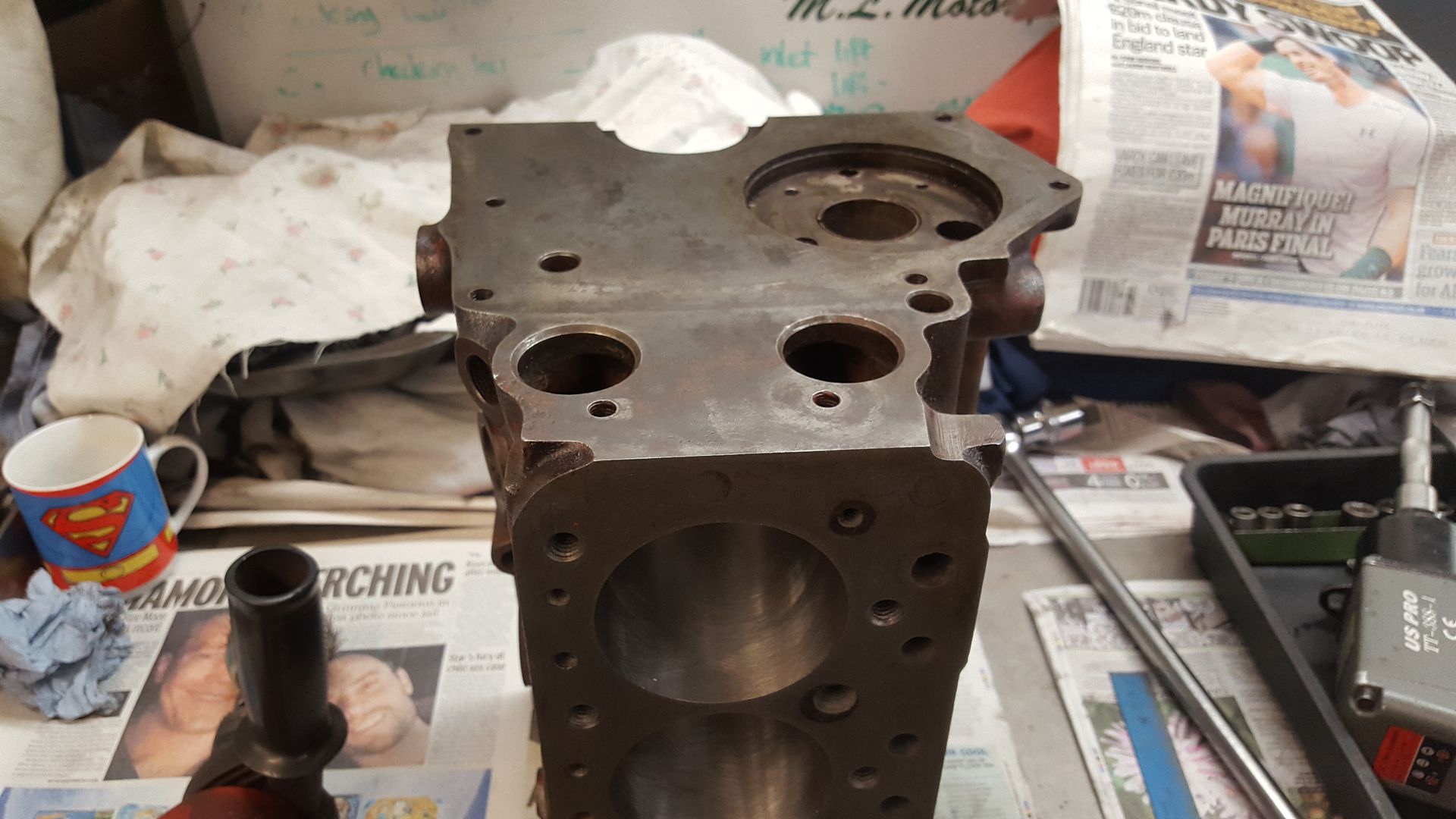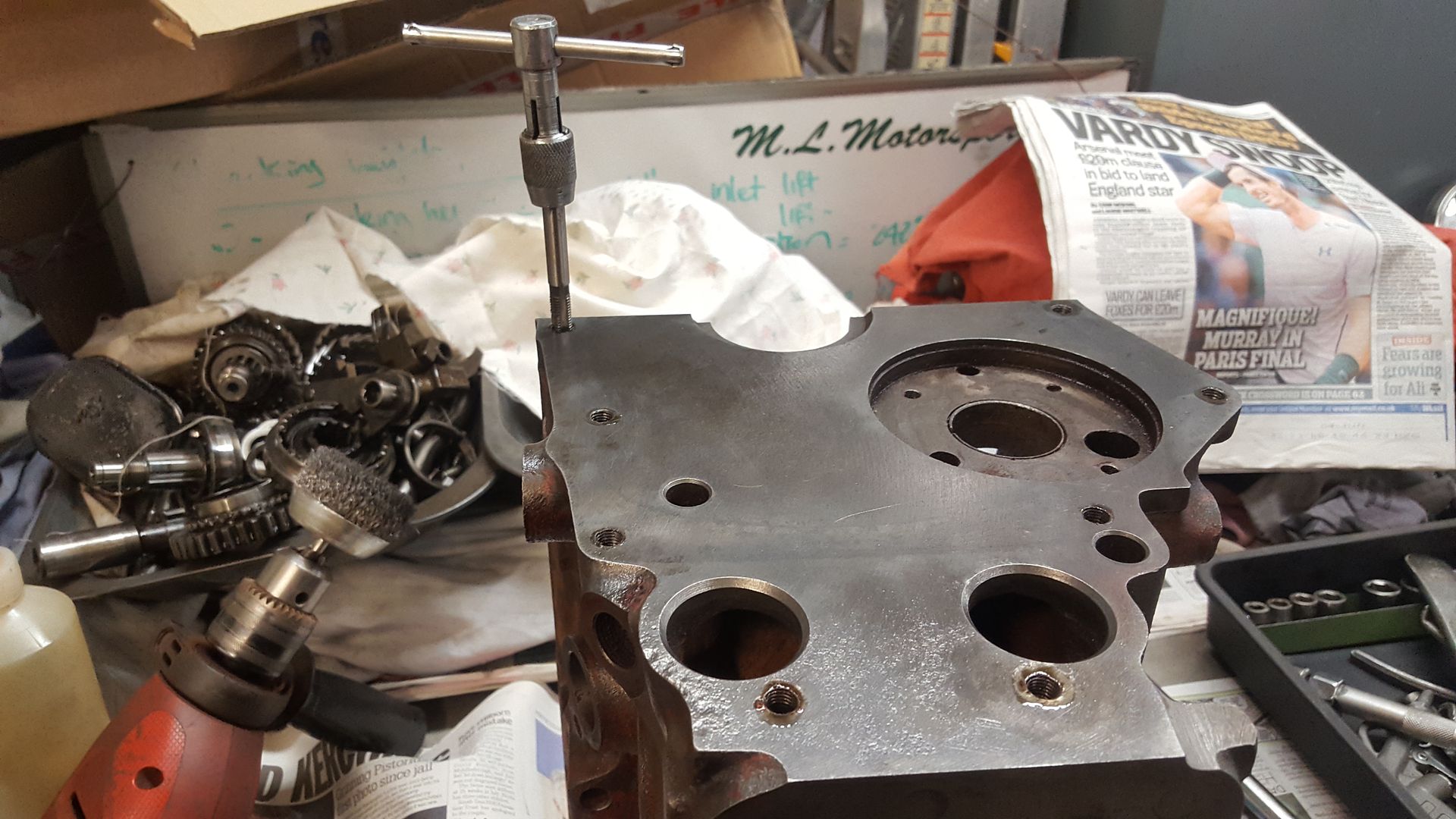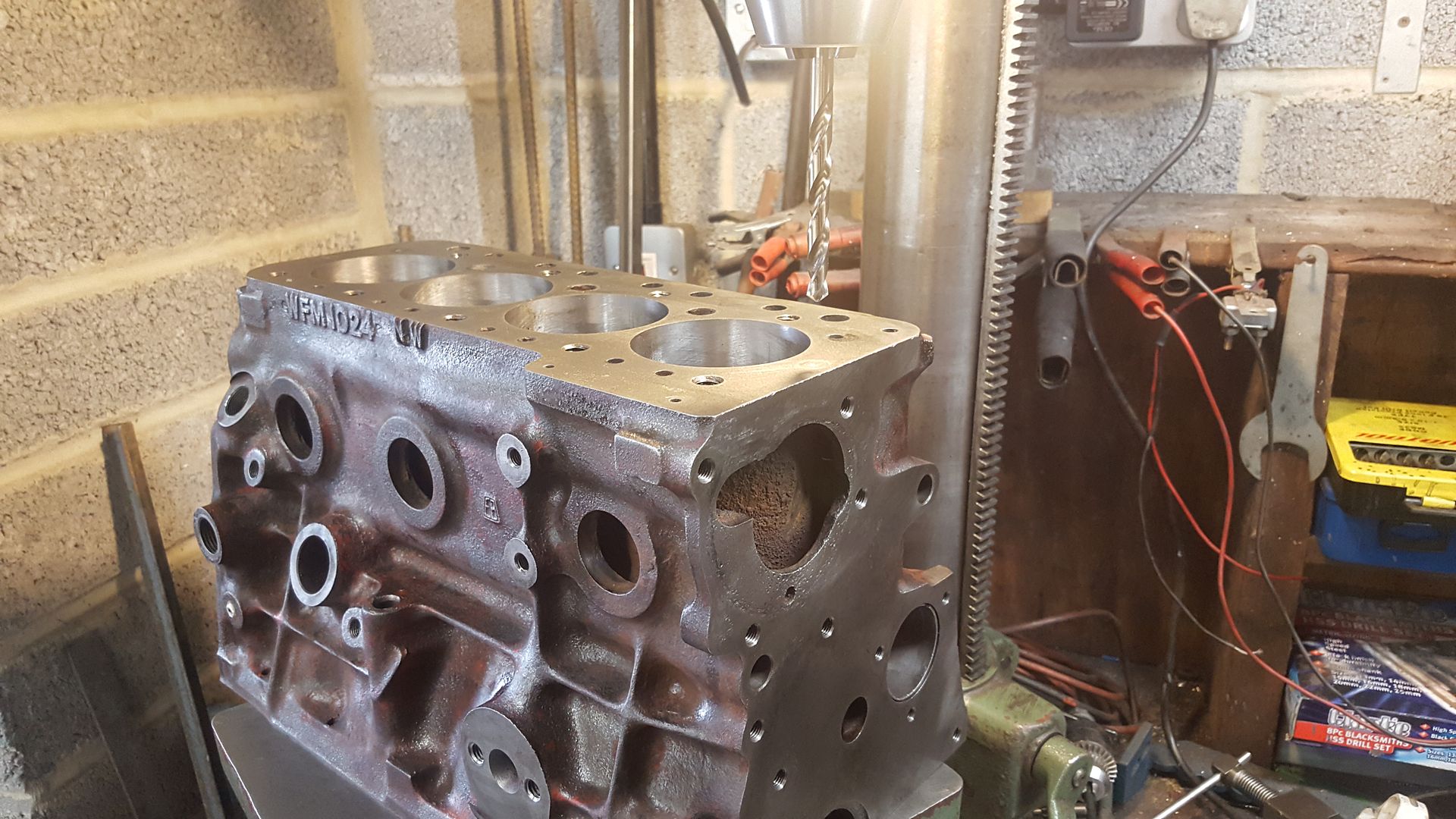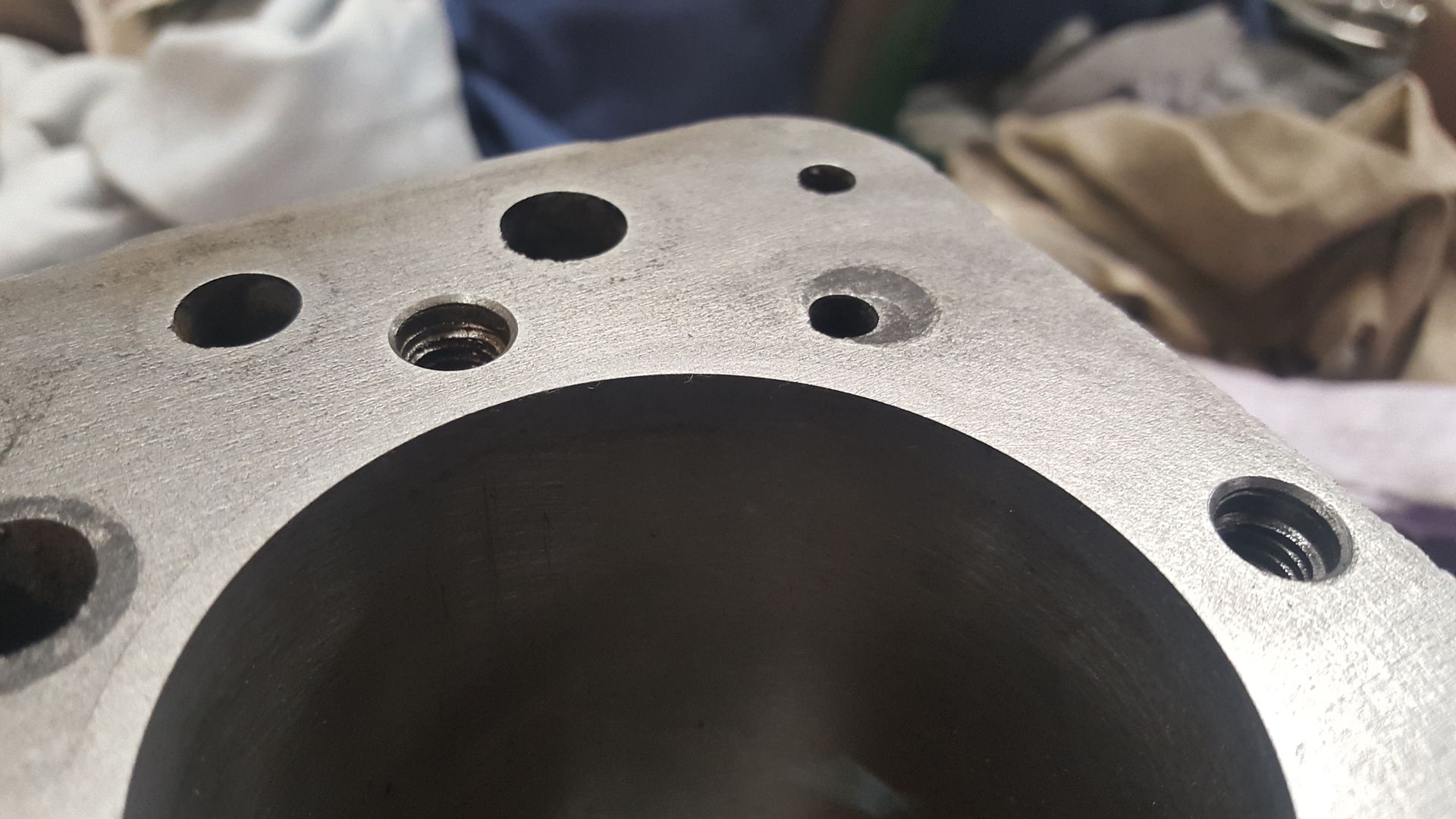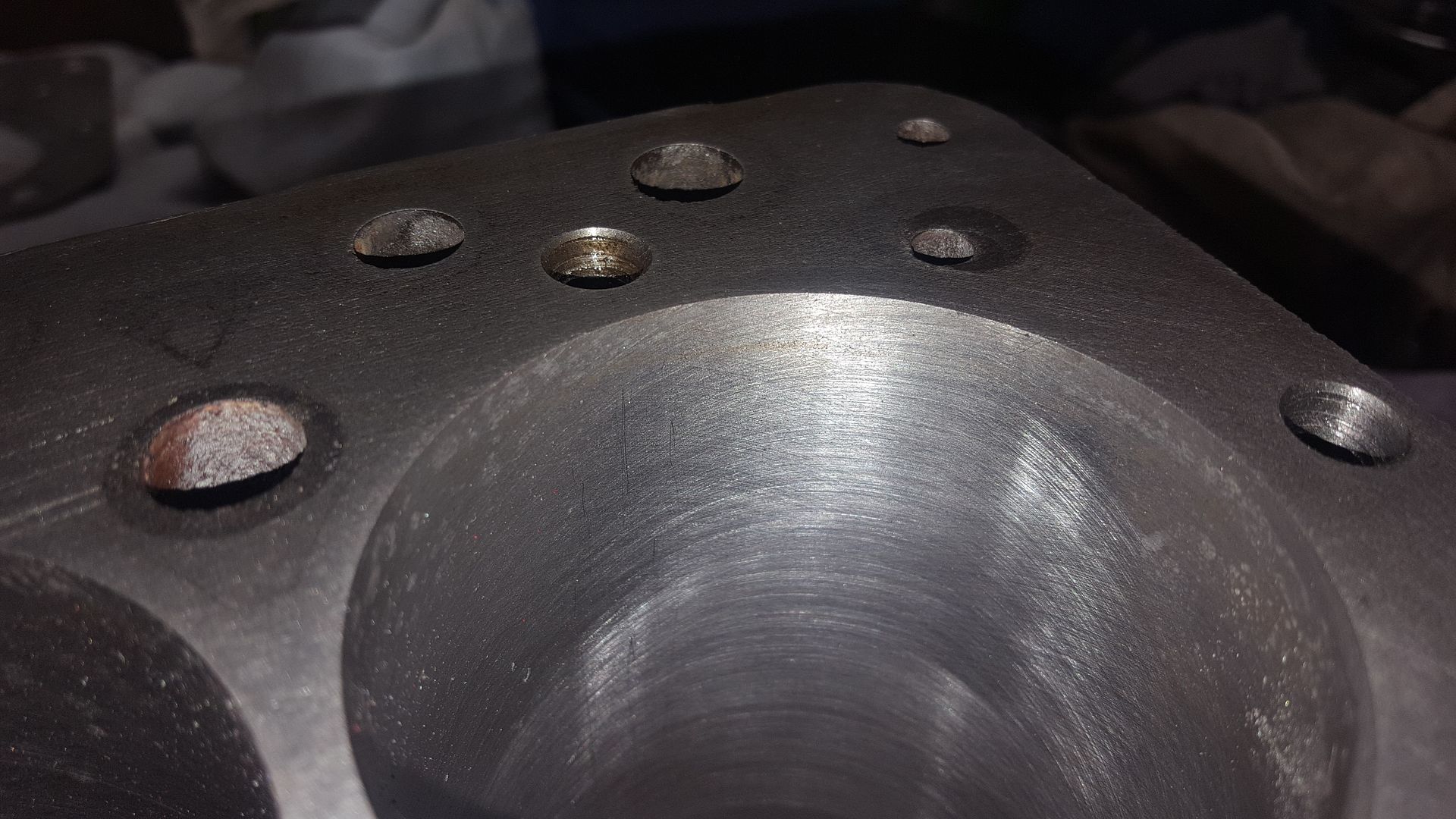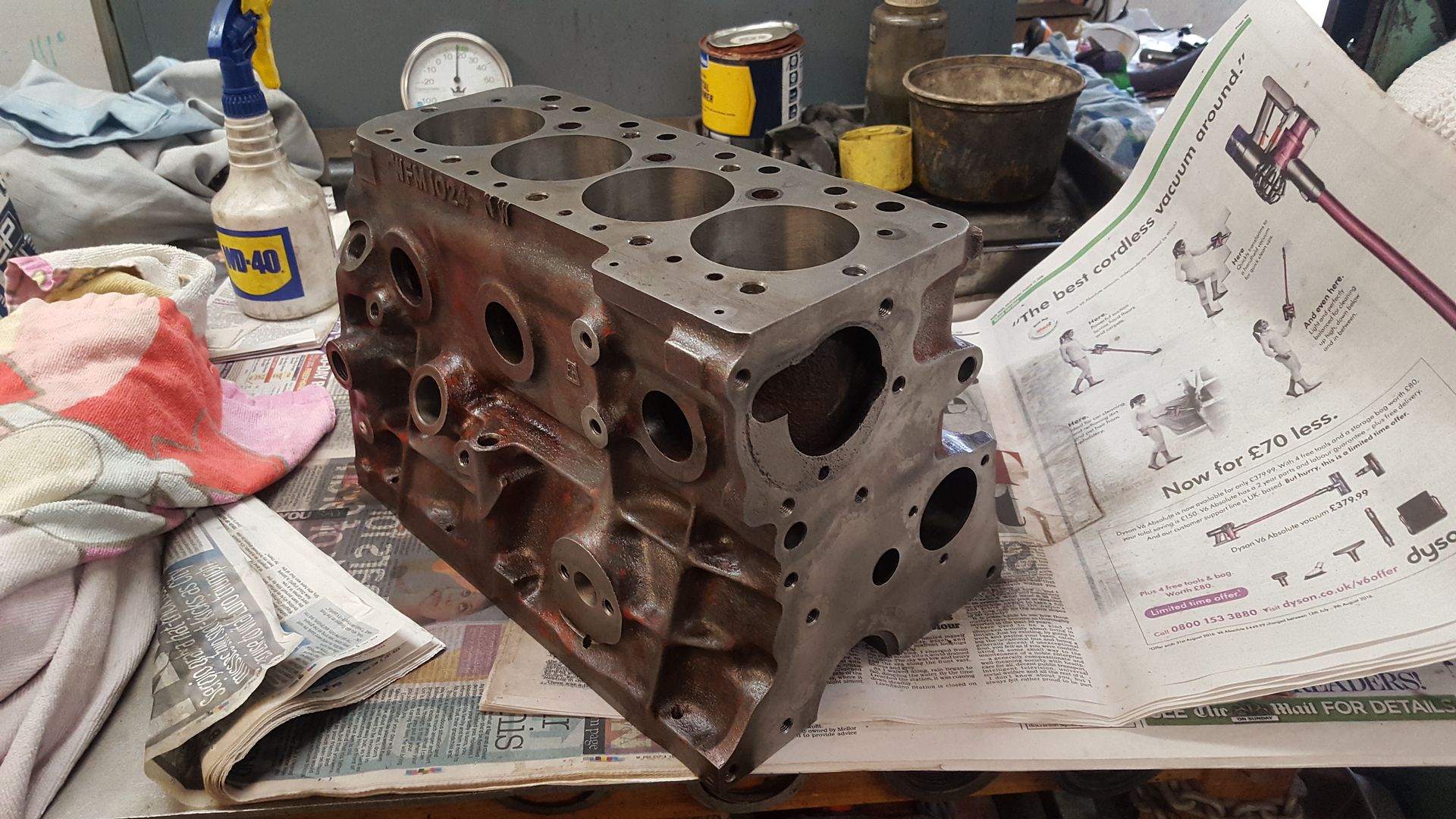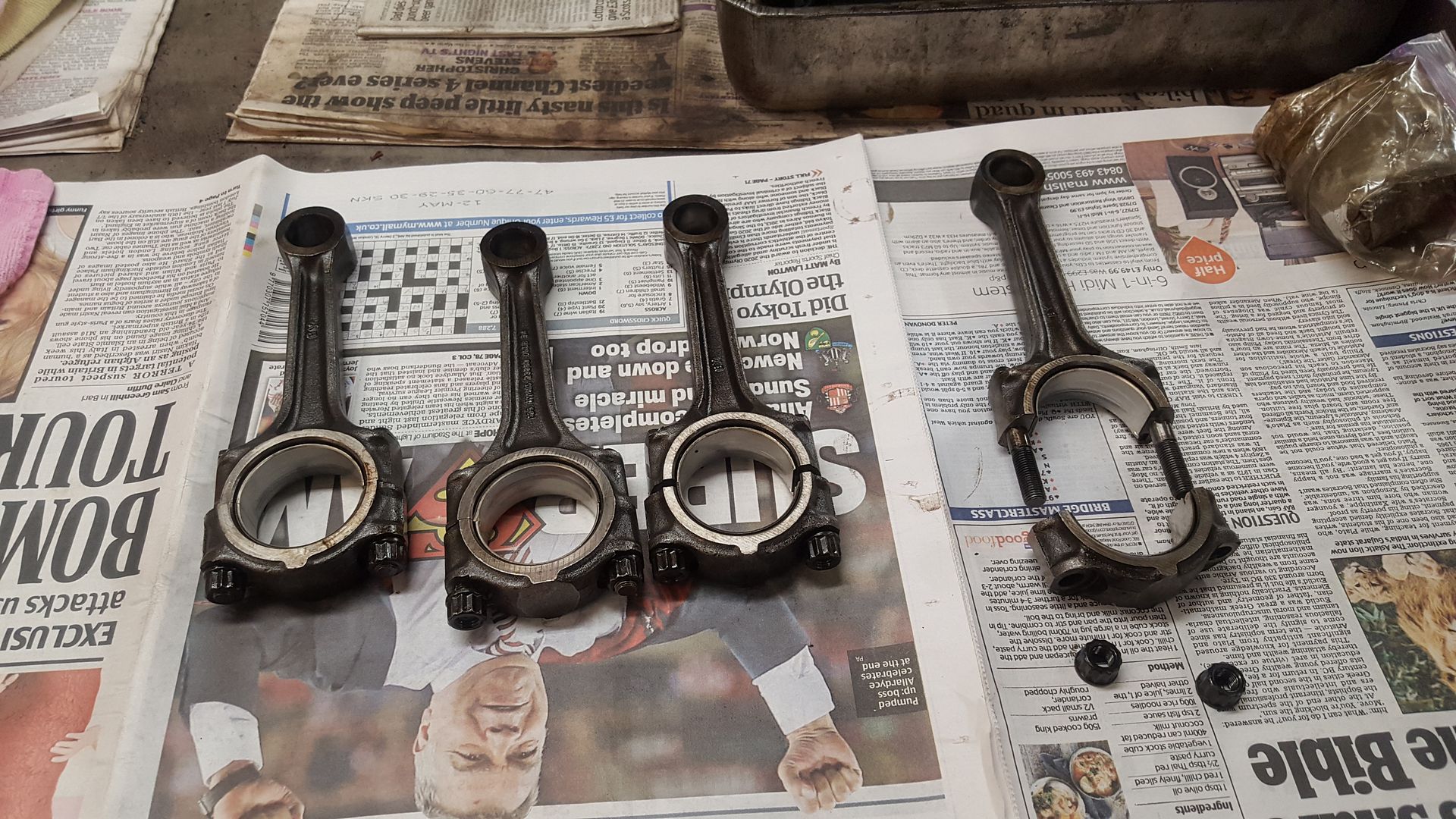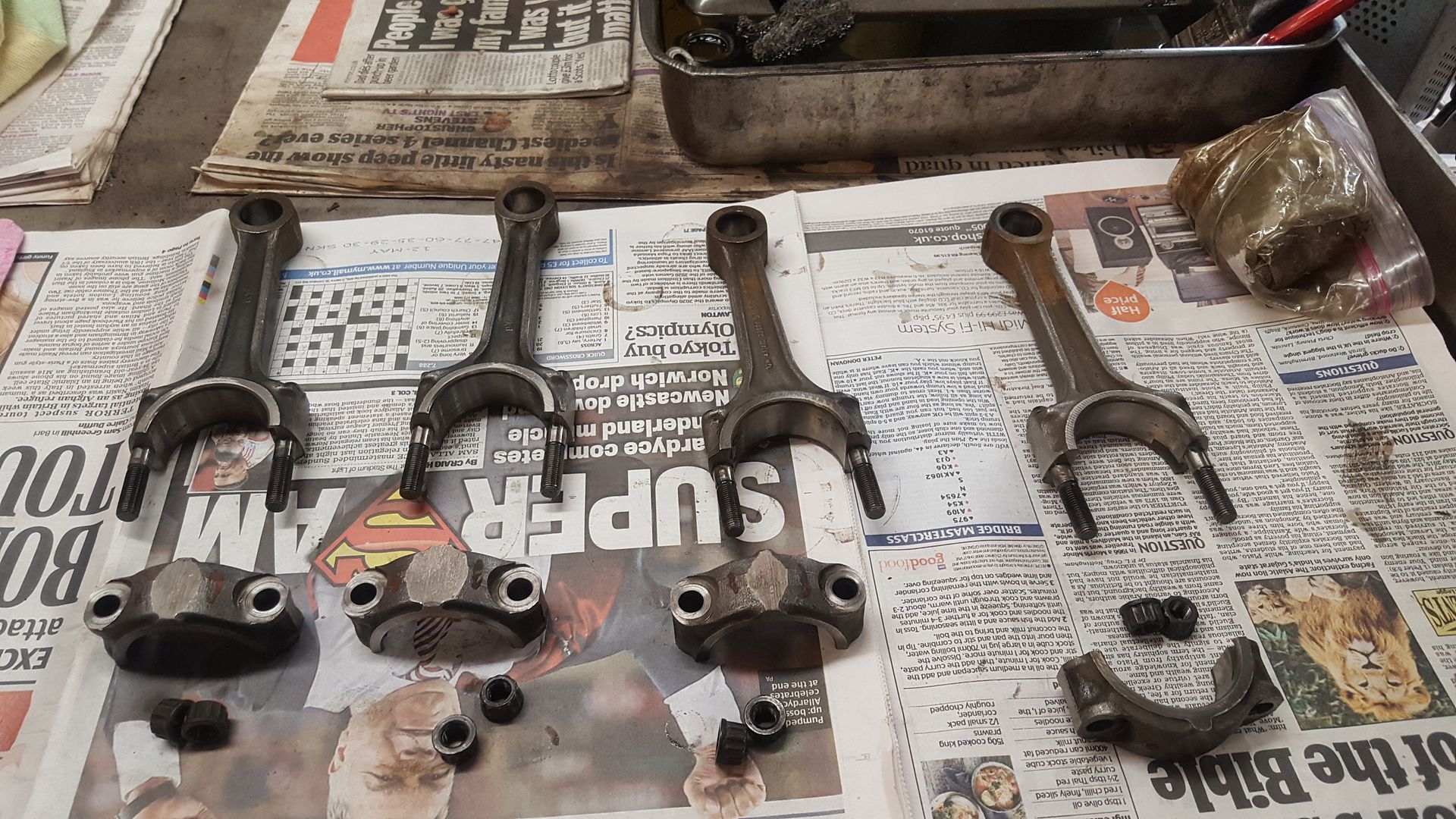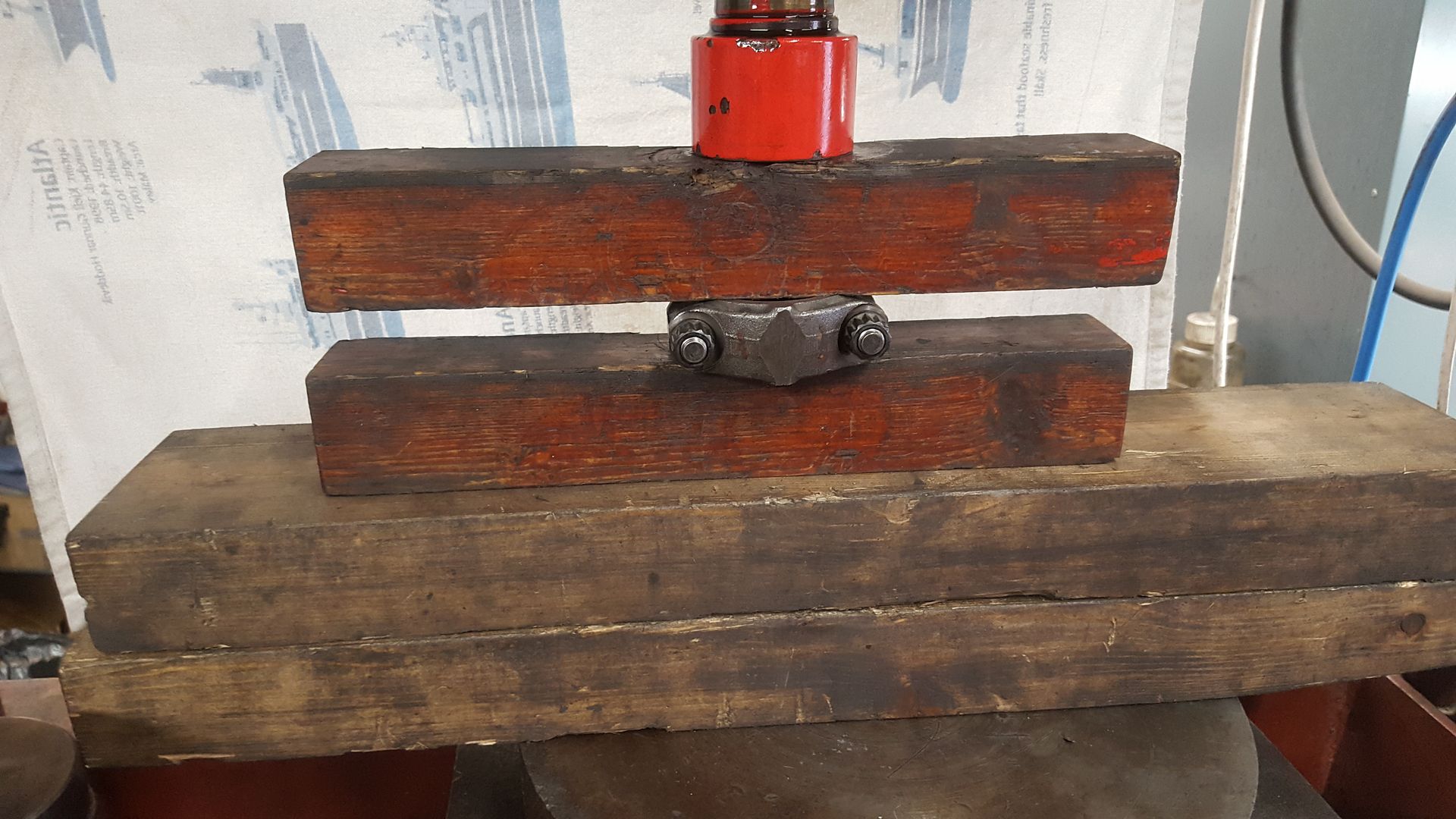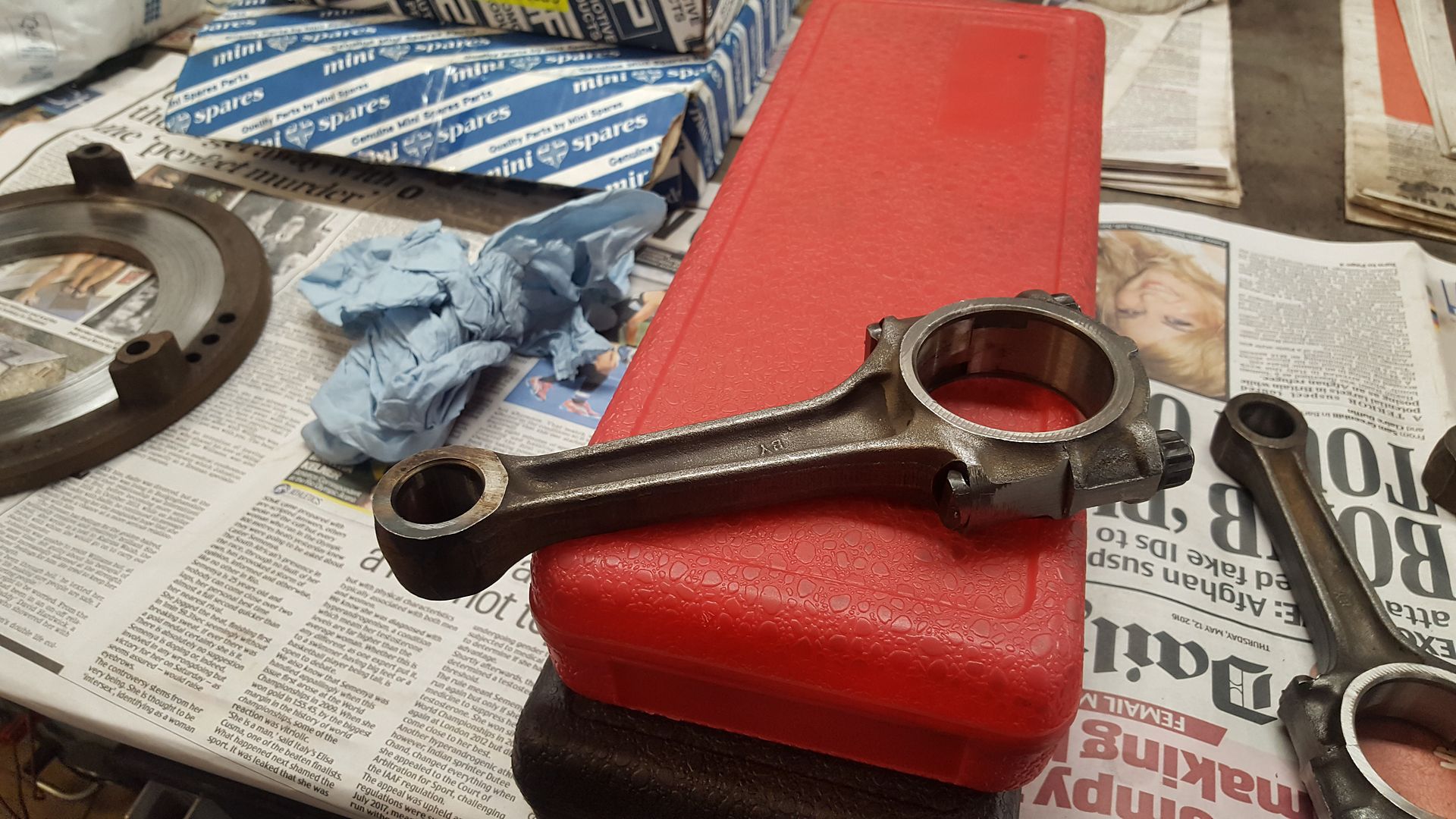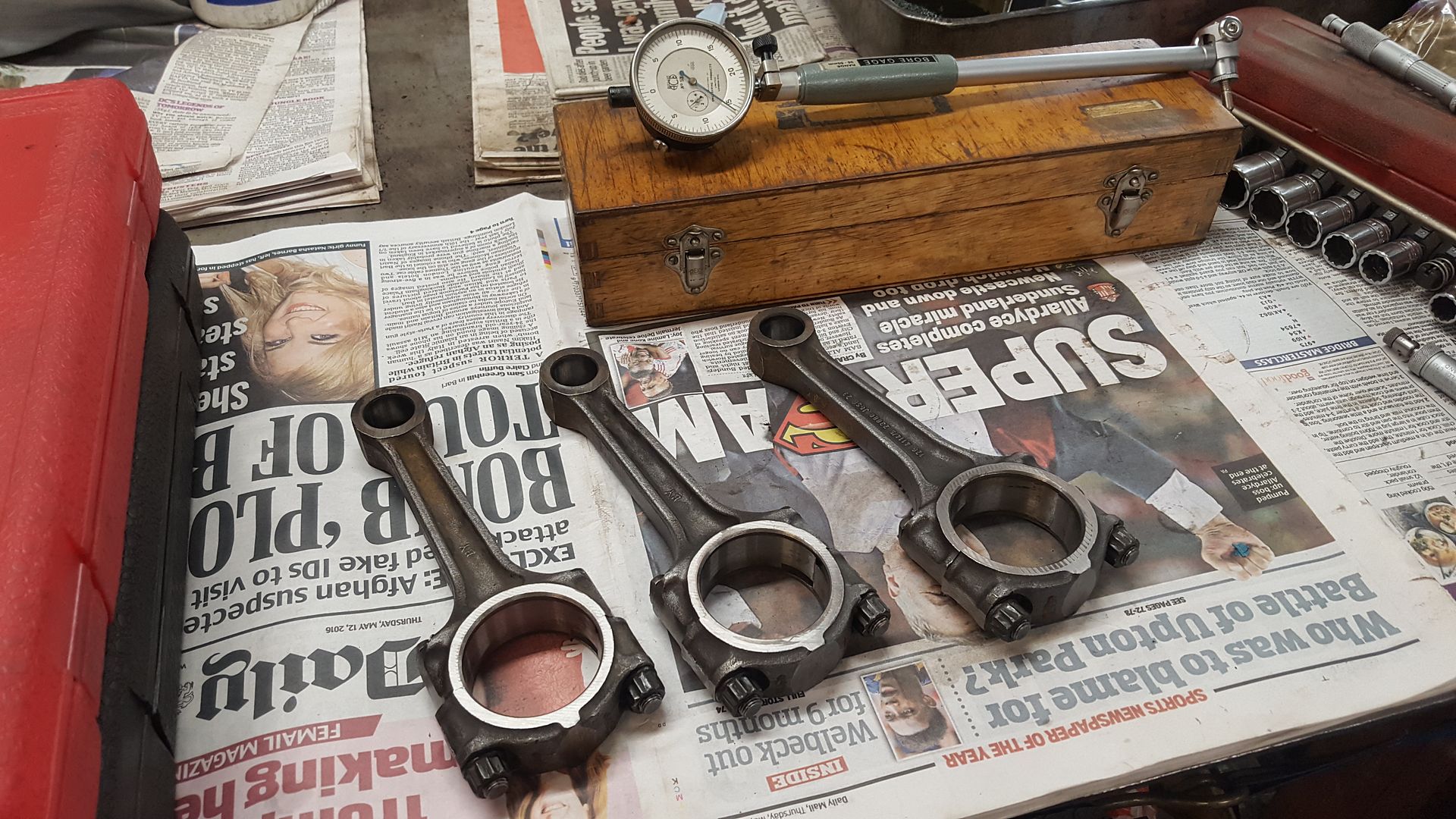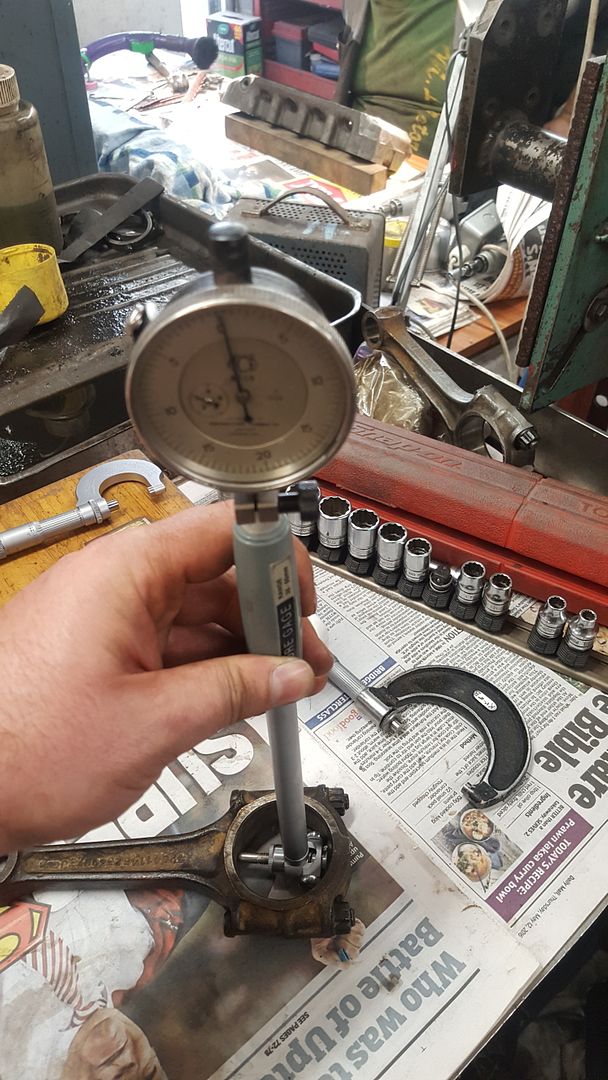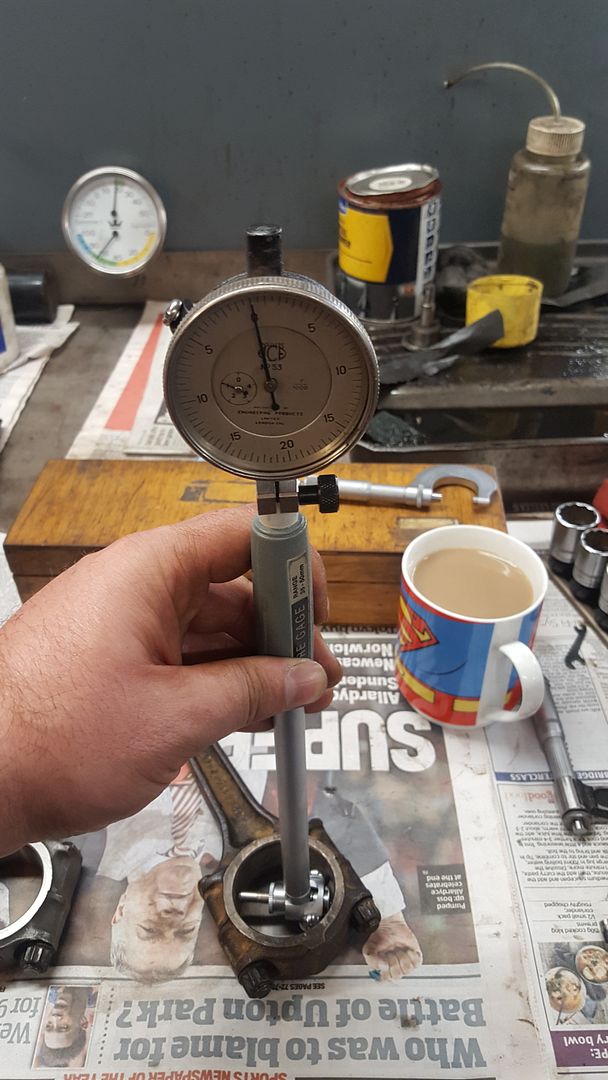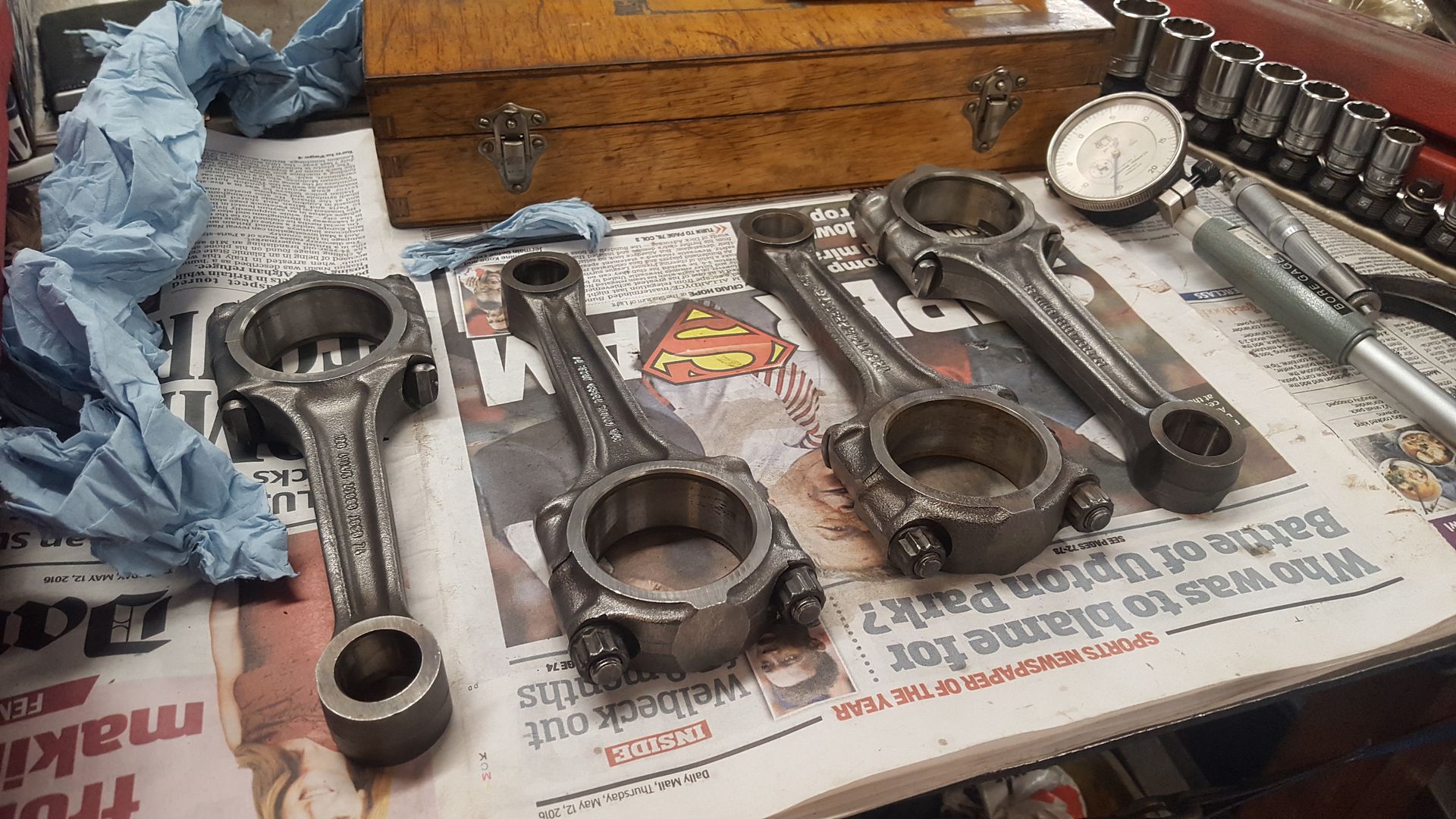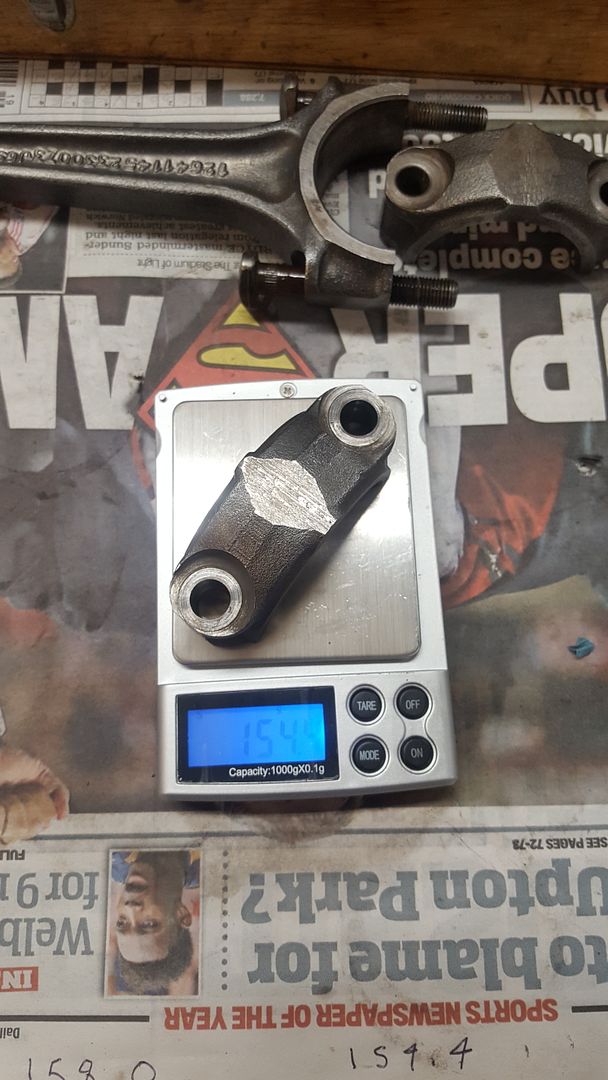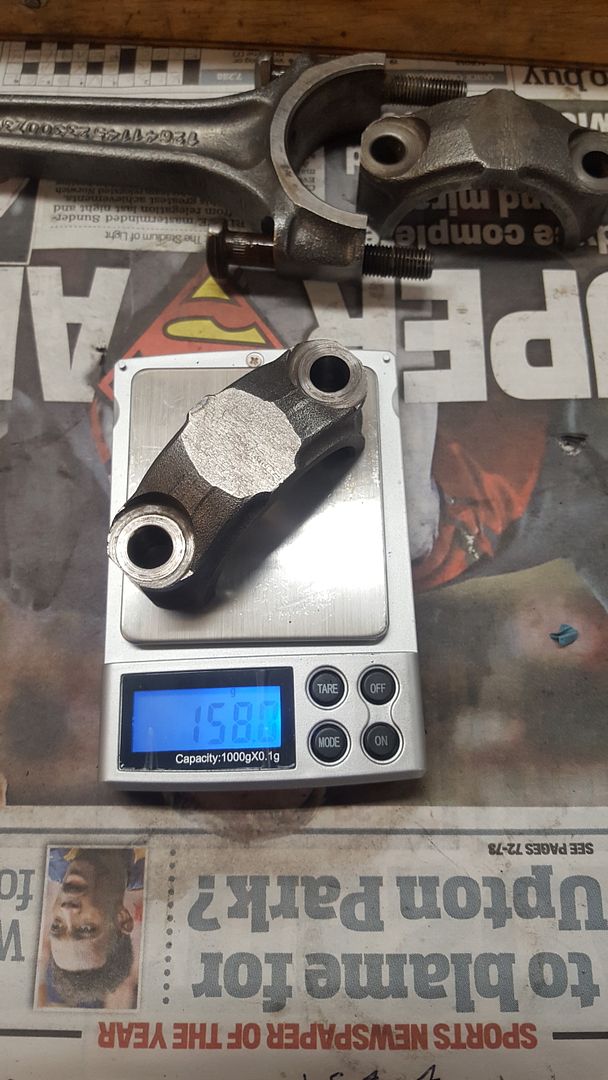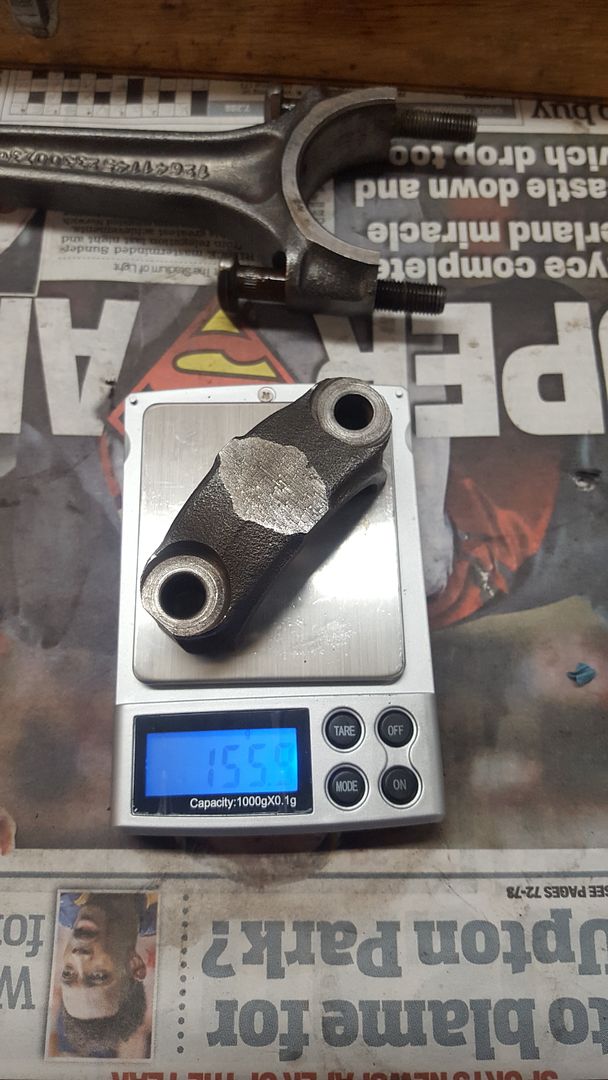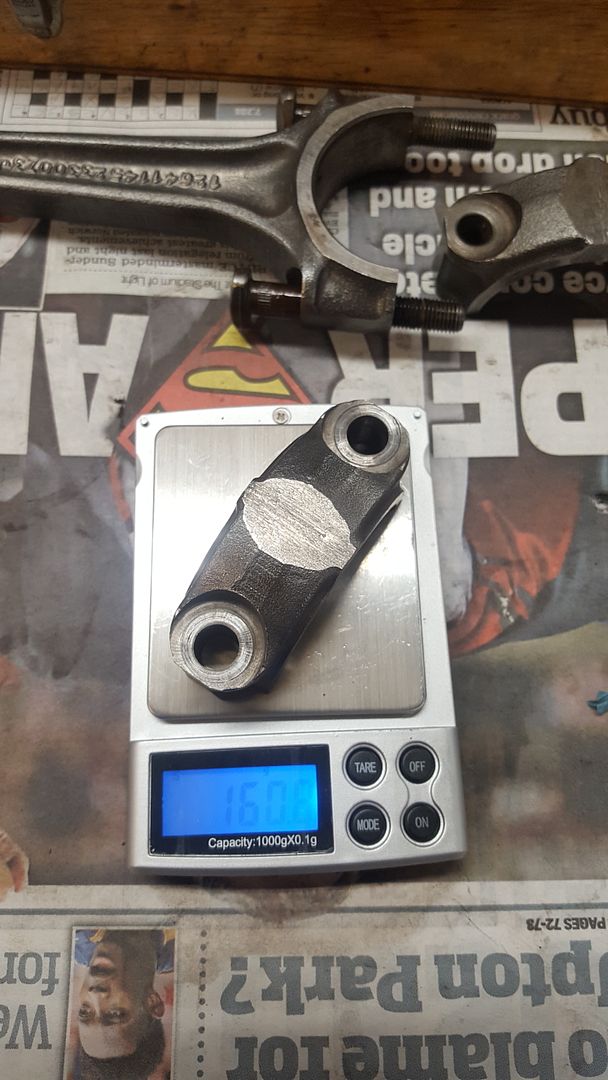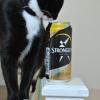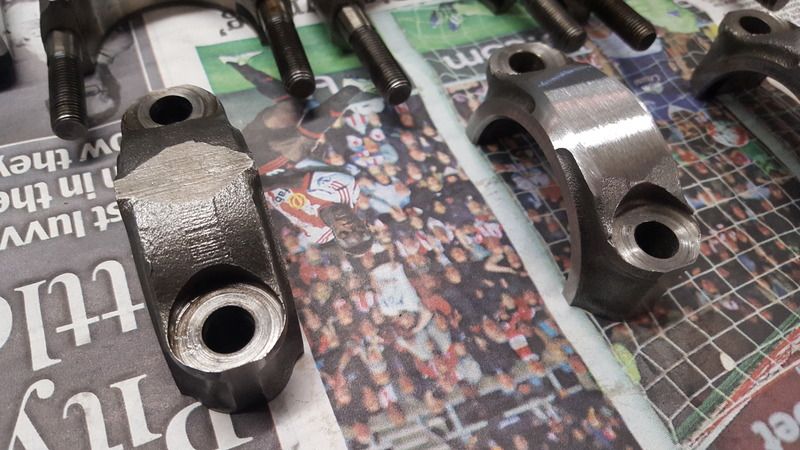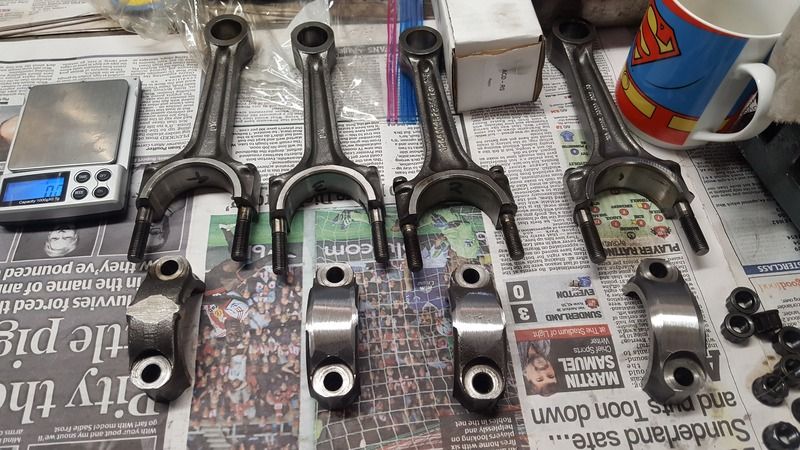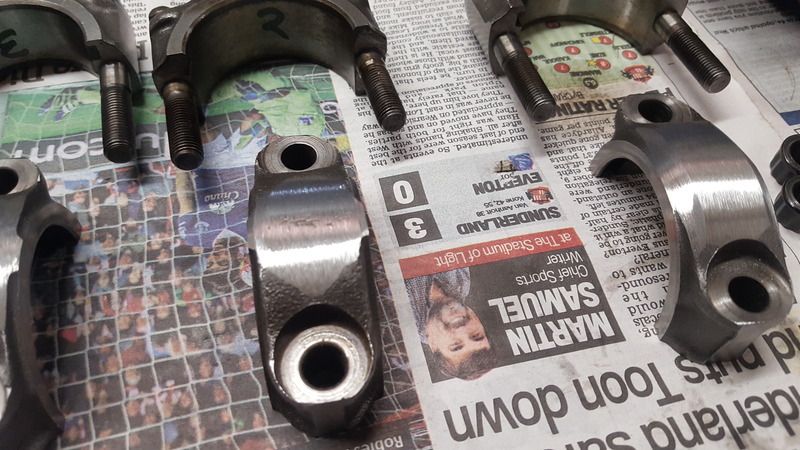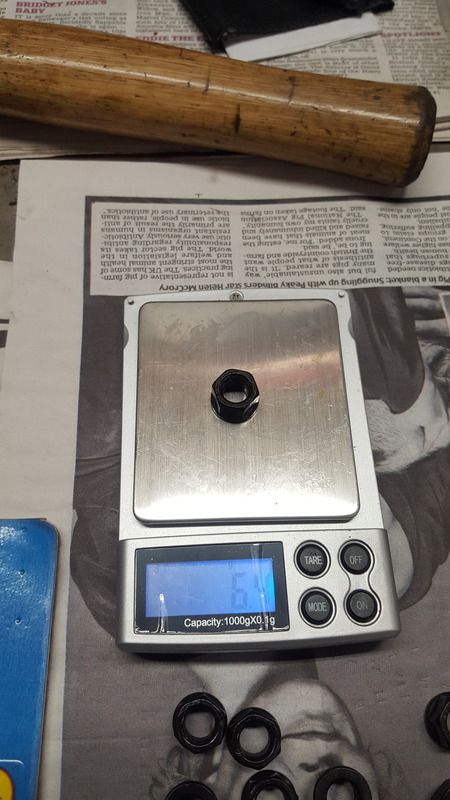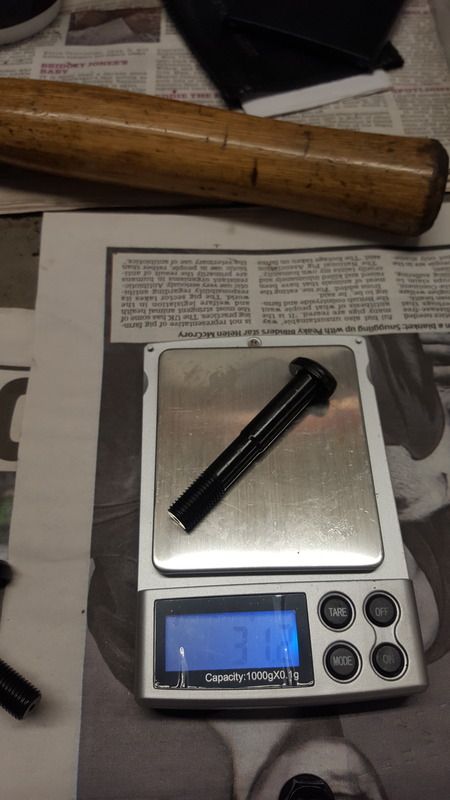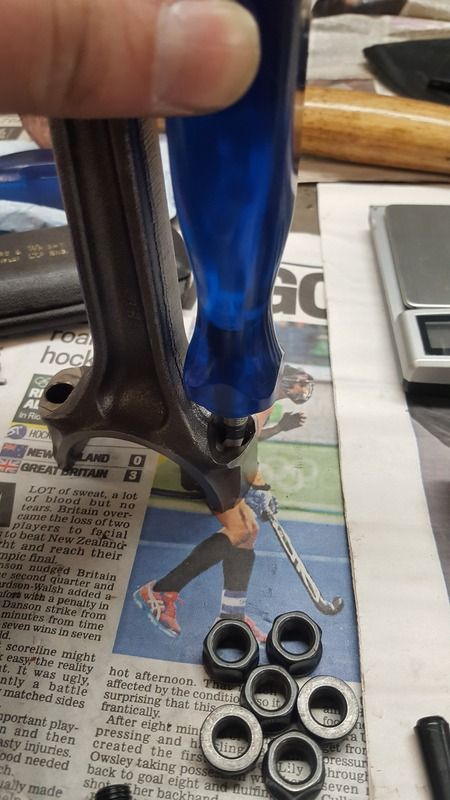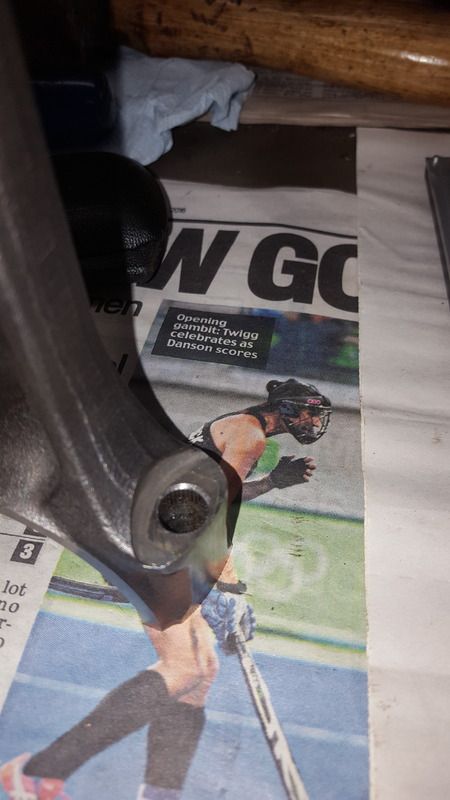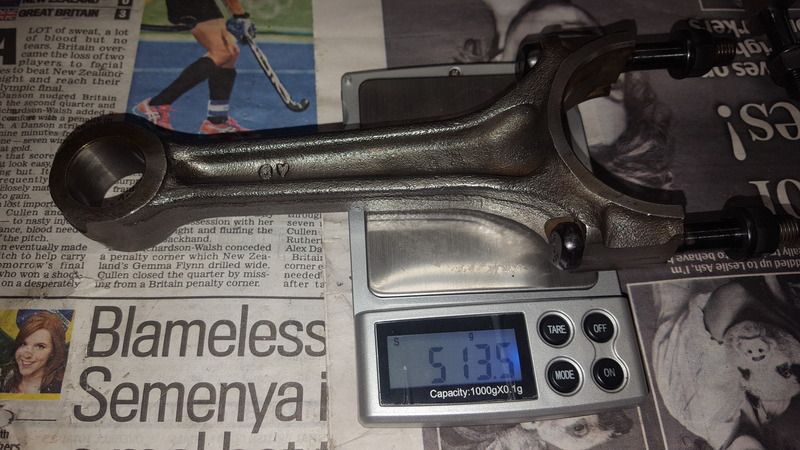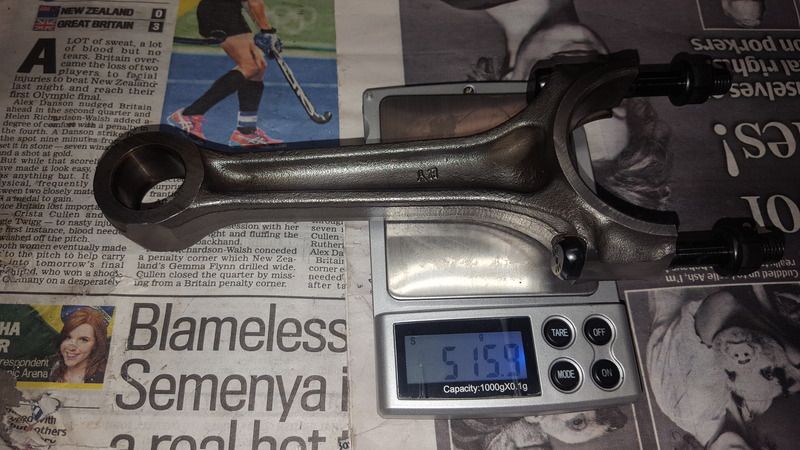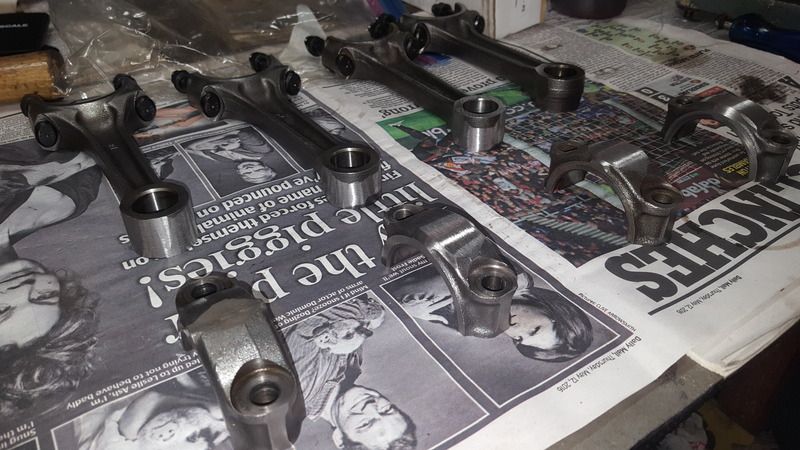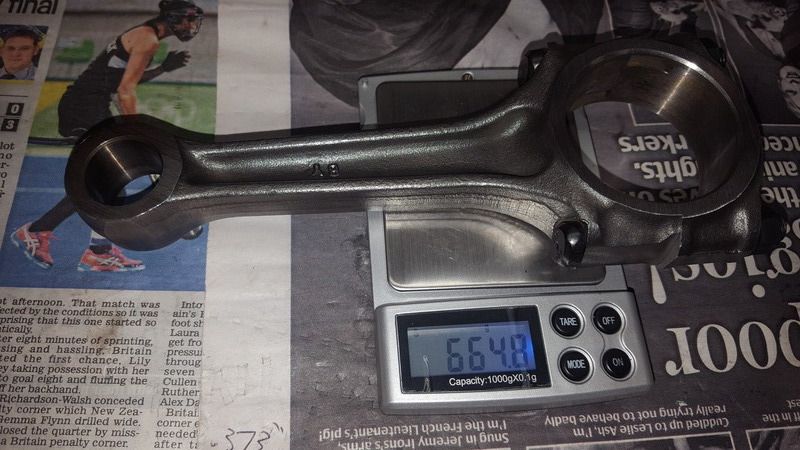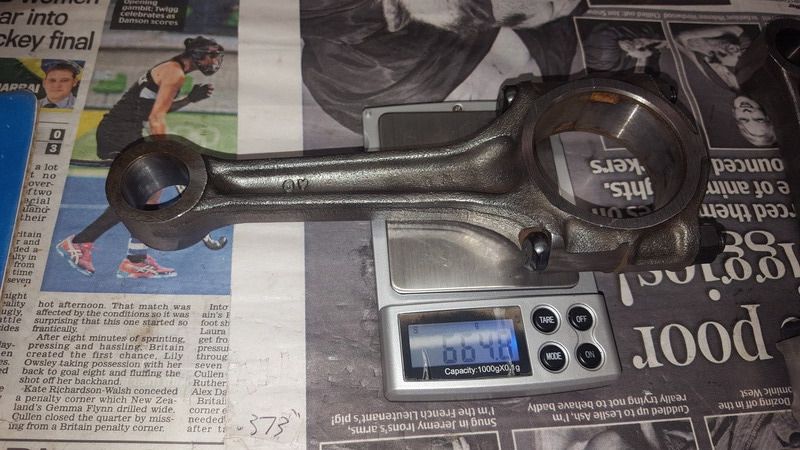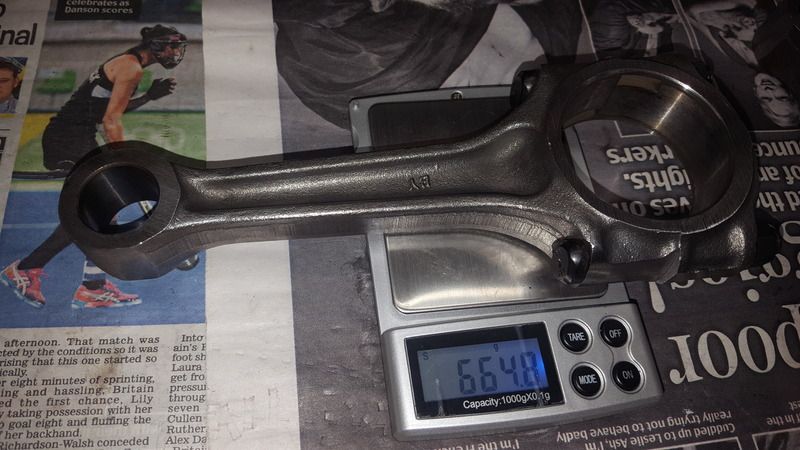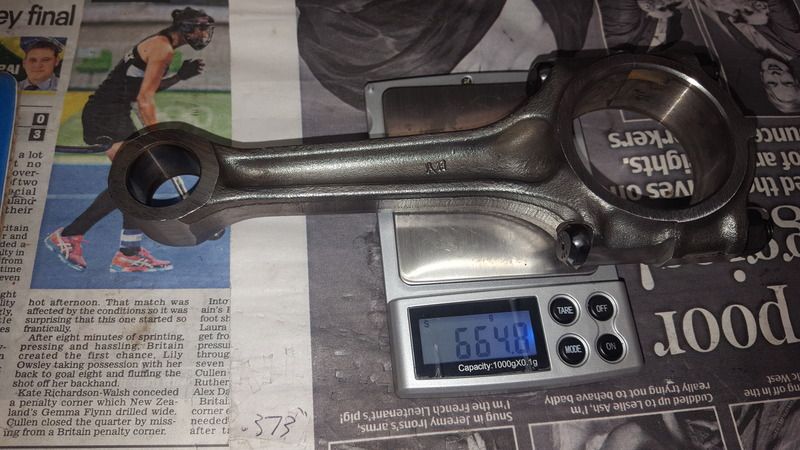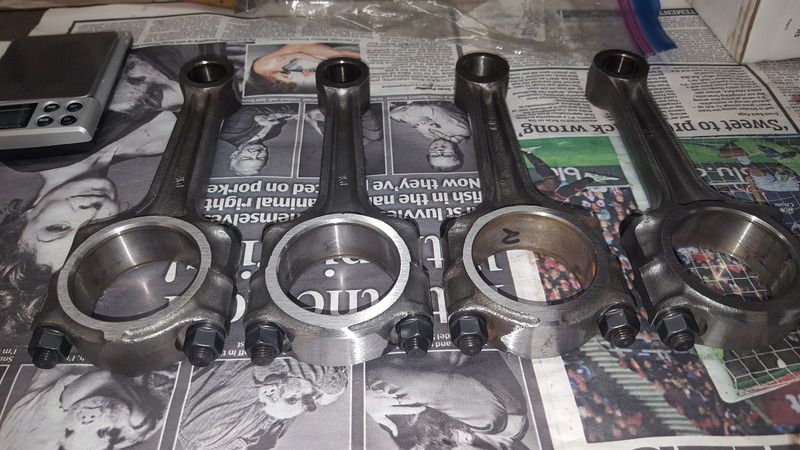So with the gear box finished and the head sorted out I decided to rebuild the carbs next. I brought a set of twin HS4 carbs before I got the engine so these were first stripped down and every part given a very good clean. I don't have any pictures of them before they were taken apart but they were very dirty and the dashpots had been painted in lacquer which had gone very yellow.
So the carbs were stripped down and all parts cleaned:
With both bodies cleaned it was time to replace the worn bushes. One at a time the carbs were mounted onto AC's pillar drill using an old cylinder head that he uses to hold the carb body square while drilling. The carb is bolted onto the head and the head bolted down. To ensure that the new bushes will be square in the body a drill bit is fitted to the drill to allow the position of the body to be adjusted until you can bring the drill bit down through the body, let go and the drill will retract the bit on its own without snagging. With this done the old bushes can be drilled out using a 9.2mm drill bit:
Once this is done the holes can be line reamed to 9.5mm ready for the new bushes:
The two faces of the carbs were then linished to ensure they were fully clean and flat and any burrs round the edges cleaned with a needle file. The carb bodes were then cleaned using brake cleaner and the carb bodies mounted in the vice to allow the new bushes to be drifted into place. When installing the bushes they need to be inserted until they just touch the inside of the body where the throttle butterfly will fit to avoid air leaks. Now the carbs have had new bushes fitted in the future if I ever need to replace them then I can just remove the old ones and insert new ones. The throttle butterfly's and shafts were then inserted and the retaining screws fitted loosely. Ensuring the throttle disks are the right way round you then hold it closed with a finger and hold the carb up to a good light source. You can then adjust the position of the shaft and disk slightly to get the best possible fit before tightening the screws and bending the back of the screws out to ensure they stay in place. At each stage of rebuilding every part should be well oiled using engine oil to ensure smooth operation.
With this done the rest of the carbs could be rebuilt. It was very useful having AC on hand while doing this as the instructions that come with the rebuild kit are useless. If you are doing this at home then I would take plenty of pictures as you take them apart so you can see how all the springs and bits fit together. So after all that I ended up with two carbs that look like this:
The last part I had time for at this engine club was to balance the dash pot pistons this is essential to ensure the carbs work as a pair, if this is not done then the dash pots will respond differently and be very hard to tune and get good results from. Fist they were given a good final clean and checked to ensure that they fitted together smoothly.
The holes in the pistons were then blocked up using blue tack and lightly oiled using a light oil and then put together. You then hold each piston at the top of the dash pot and let them go at the same time and watch how they fall. You need to do this a few times to see if they fall at the same time. Mine most of the time fell together so did not need any further work so the new AAU swinging needles were fitted and the dash pot assembly's fitted to the carbs.
The last job was to set the idle screws, these were screwed down until they met the throttle lever and then turned 2 1/2 turns. I forgot to add earlier in the post the jets were also set at this stage to give an initial setting when they are fitted to the engine. I had brought all new screws for the dashpots/float chambers and idle screws as the old ones were quite churned up and miss matched I how ever forgot to get new fast idle screws, as I had run out of time at this engine club the carbs will be mounted onto the manifold and fully finished at the next one. I will be running the engine in on a HIF44 carb and then these fitted will be fitted after.


